In the building from 1713, which once housed an old Venetian warehouse, today you can find the Archaeological Museum of Nafplio.
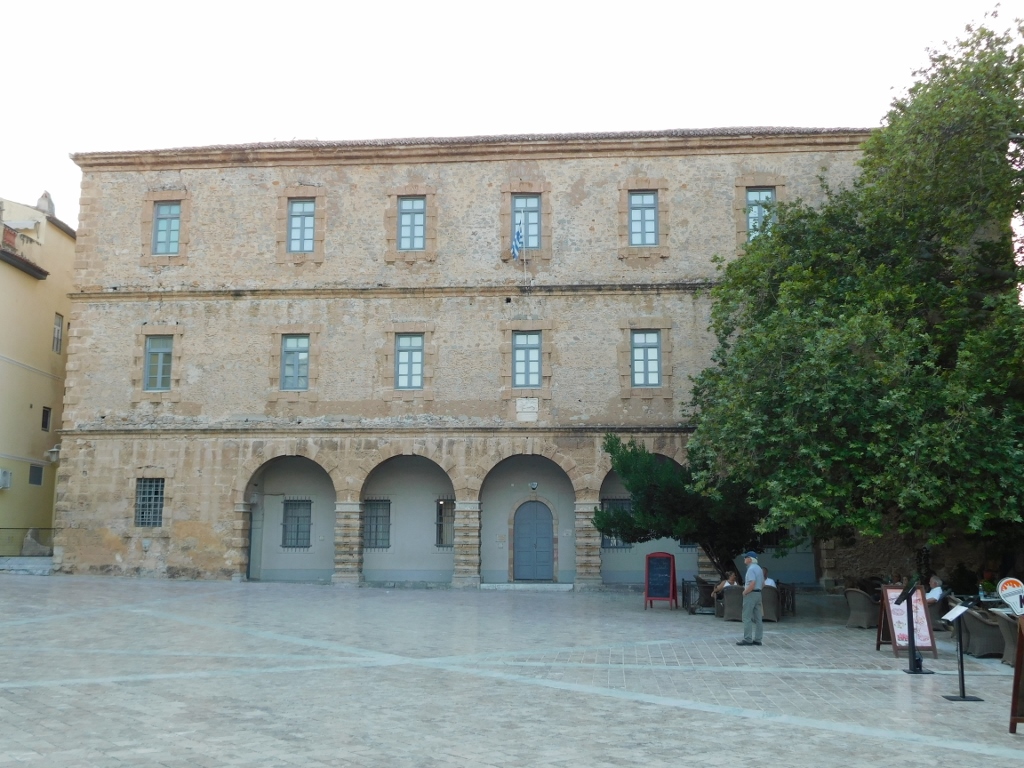 Archaeological Museum of Nafplio
Archaeological Museum of Nafplio
This is not a particularly large museum, but I really enjoyed my visit. There were various exhibits, but I paid the most attention to the pottery and I took pictures of some pieces that caught my eye. To start with, there were sauceboats from the Bronze Age (2700-2200 BCE), found at the site of ancient Tiryns. Who knows what they ate back then when they needed to create such types of dishes!
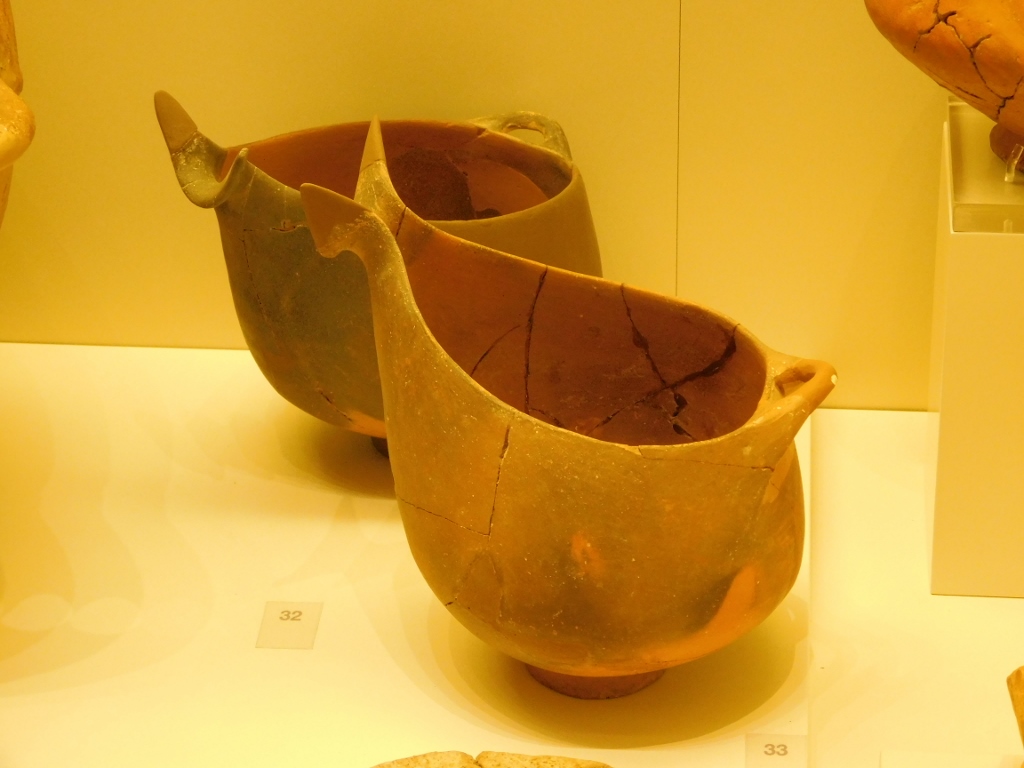 Archaeological Museum of Nafplio, a detail
Archaeological Museum of Nafplio, a detail
There were also various figurines, some of which were found at the site in Tiryns and others in Asine, but they were all made around the 12th century BCE.
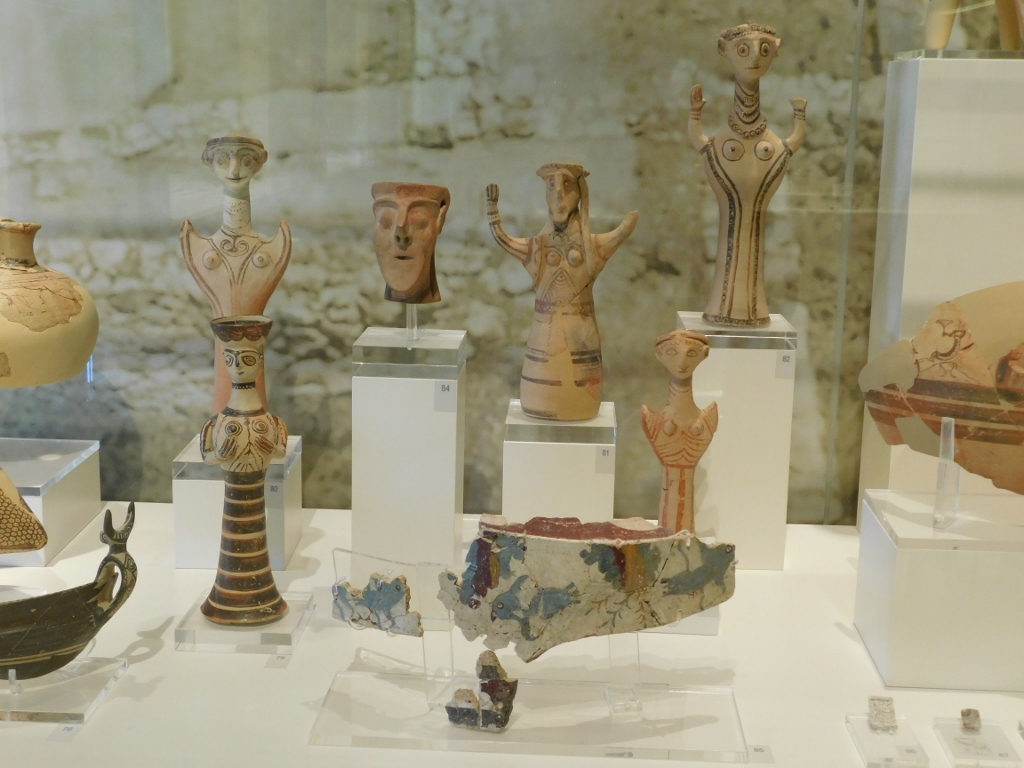 Archaeological Museum of Nafplio, a detail
Archaeological Museum of Nafplio, a detail
You can also see beautiful pottery from the 15th to 14th century BCE.
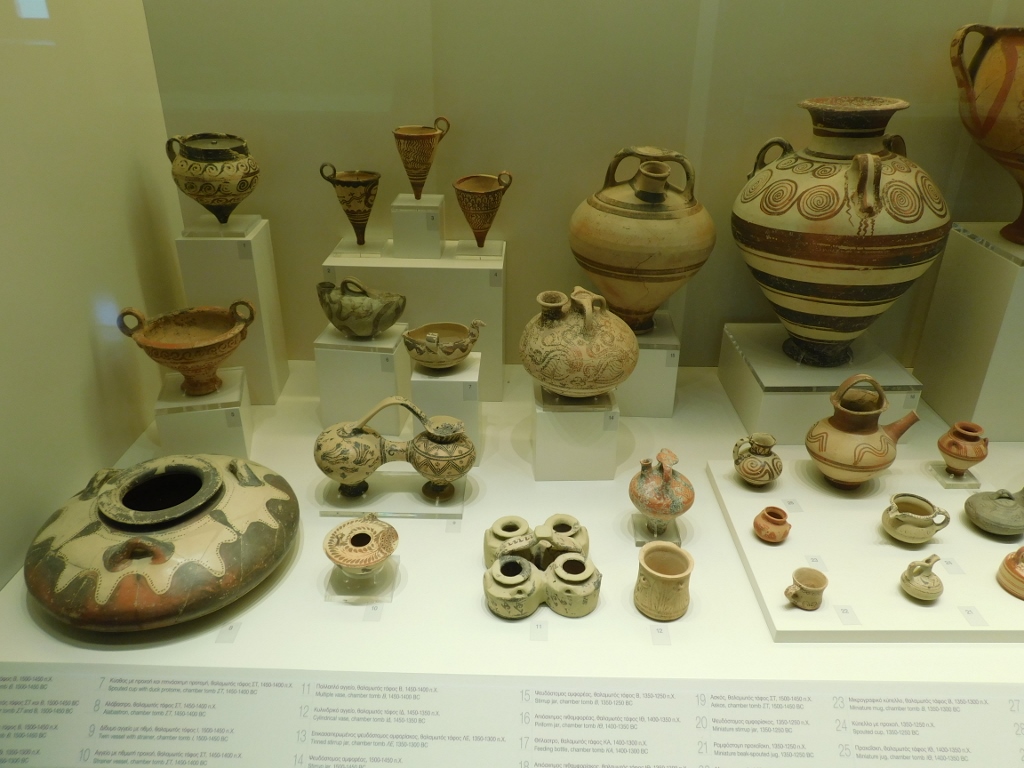 Archaeological Museum of Nafplio, a detail
Archaeological Museum of Nafplio, a detail
But, the museum doesn’t only display pottery items. Since hunting and warfare played a significant role in the daily life of the ancient peoples, those belonging to the Mycenaean civilisation (and not just them), some of the exhibited artefacts are related to these aspects. For example, there is bronze armour and even more impressive is a helmet decorated with wild boar tusks. To embellish just one helmet, at least 40 wild boars would have to be hunted down.
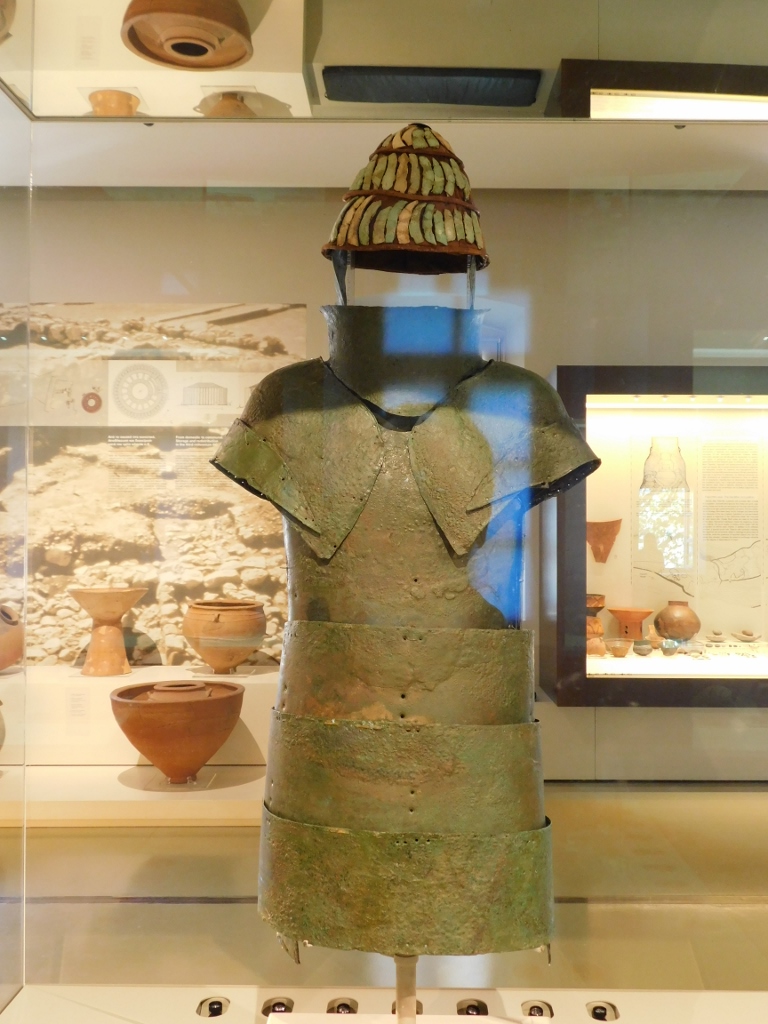 Archaeological Museum of Nafplio, a detail
Archaeological Museum of Nafplio, a detail
And then I returned to the pottery and continued to enjoy the exceptional skill and creativity of the ancient artisans. In the next photograph, you can see lidded vessels (pyxides). The one on the left was found in the area of Asine and dates back to the period of 730-690 BCE. The vessel on the right, featuring horses on the lid, was found in the same location and dates back to the period of 750-735 BCE.
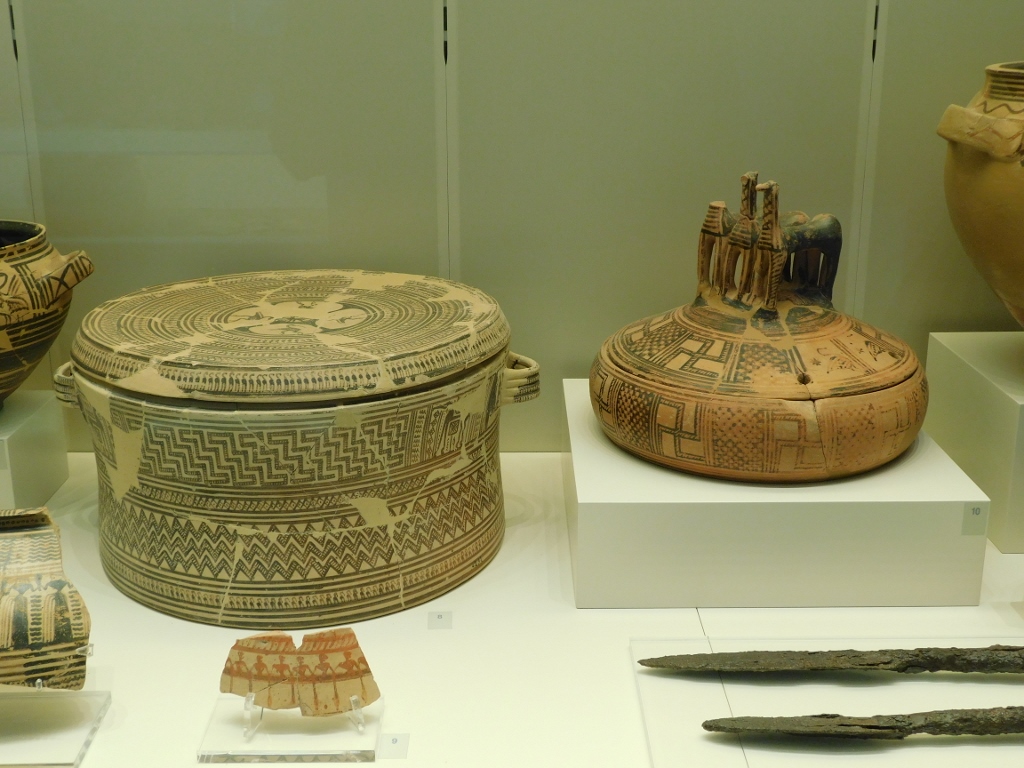 Archaeological Museum of Nafplio, a detail
Archaeological Museum of Nafplio, a detail
In the history of art, there is a style used in Ancient Greece from the 7th to the 5th century BCE known as the “black-figure style.” This style was eventually replaced by a more advanced technique, which featured red figures on a black background (red-figure pottery). In the next photograph, you can see exhibits that illustrate both of these styles, all originating from the early 5th century BCE.
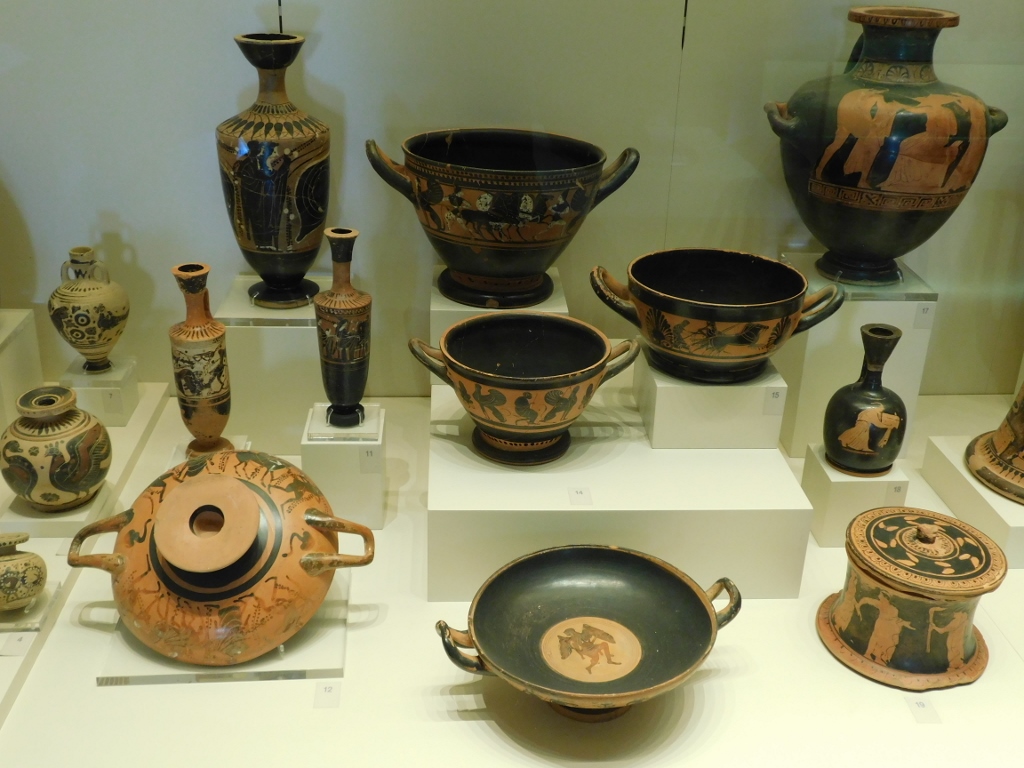 Archaeological Museum of Nafplio, a detail
Archaeological Museum of Nafplio, a detail
A beautiful exhibit is an example of terracotta votive shields, with this one found in Tiryns. It is believed that such shields were hung in a sacred place or used during the performance of rituals.
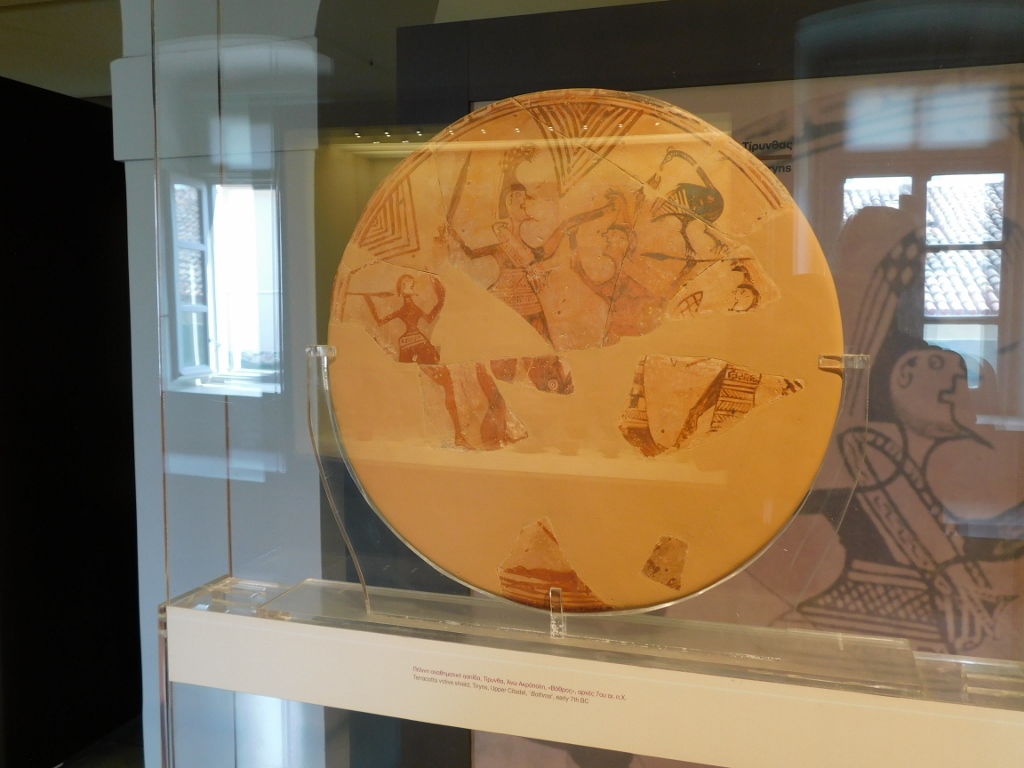 Archaeological Museum of Nafplio, a detail
Archaeological Museum of Nafplio, a detail
In the area of Tiryns, a fresco was found that can be seen in the next photograph. The fresco depicts rosettes and spirals, as well as flowers, and it dates back to the 13th century BCE.
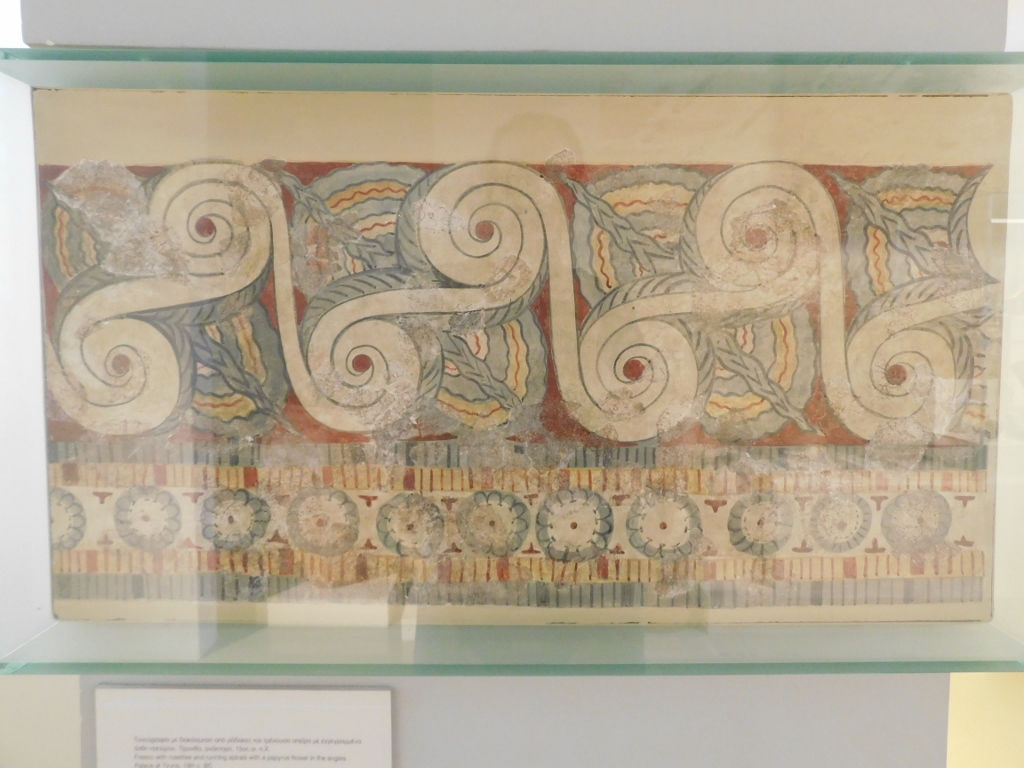 Archaeological Museum of Nafplio, a detail
Archaeological Museum of Nafplio, a detail
However, perhaps my favourite items were the ancient “feeding bottles” from the period of 1300-1250 BCE. In the first photo below, you can see them at the bottom on the right-hand side, while in the second image, they are shown in closer detail.
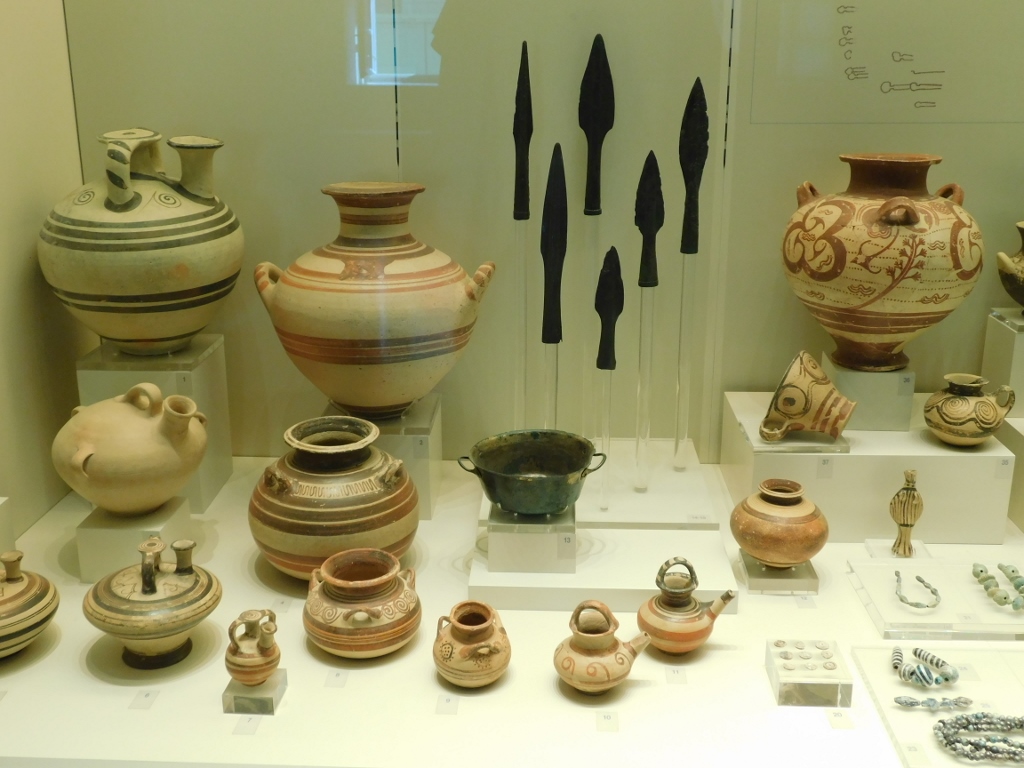 Archaeological Museum of Nafplio, a detail
Archaeological Museum of Nafplio, a detail
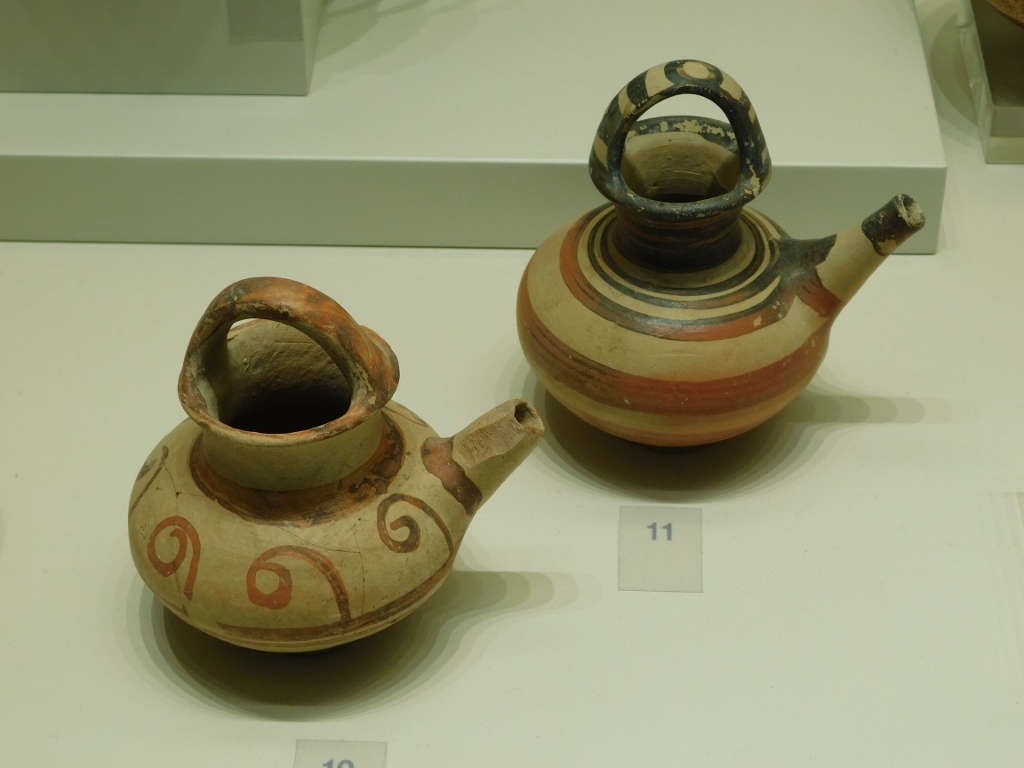 Archaeological Museum of Nafplio, a detail
Archaeological Museum of Nafplio, a detail
Since I managed to visit the museum before it closed that day, I could now peacefully go for lunch. On my way, I glanced up at Palamidi, the hill rising above the town, where the fortress of the same name is located.
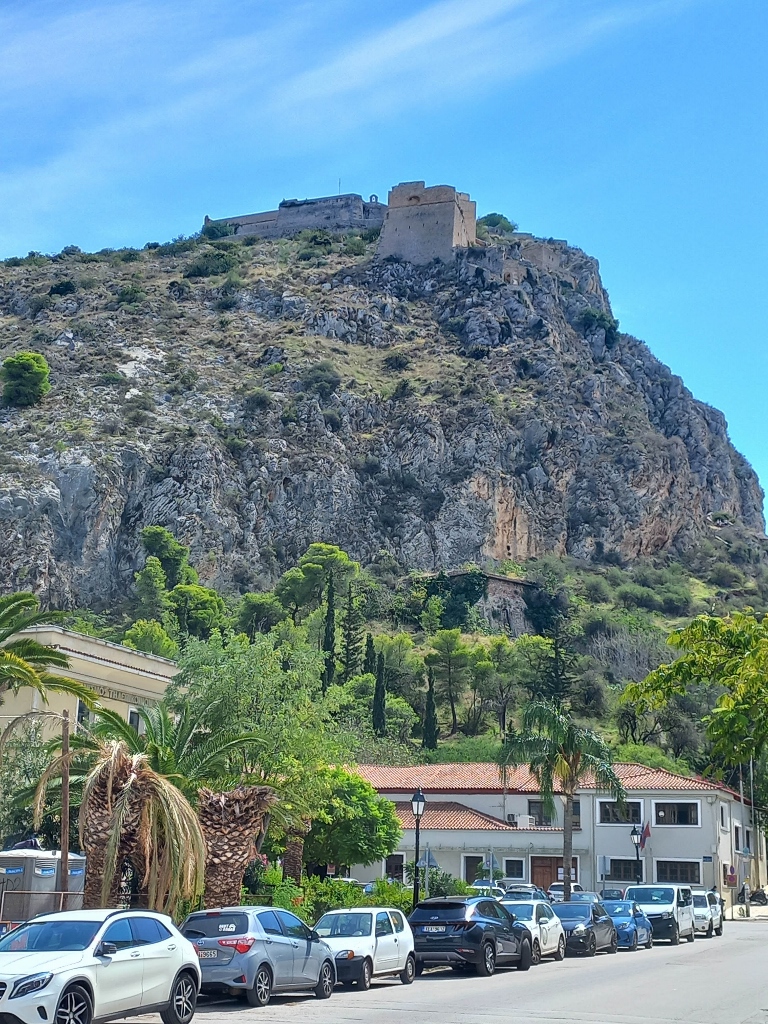 Palamidi Fortress, view from Nafplio
Palamidi Fortress, view from Nafplio
Lunch was quite lovely and I also tried another type of Greek beer. While some people might prefer one type over another, I find all beers enjoyable.
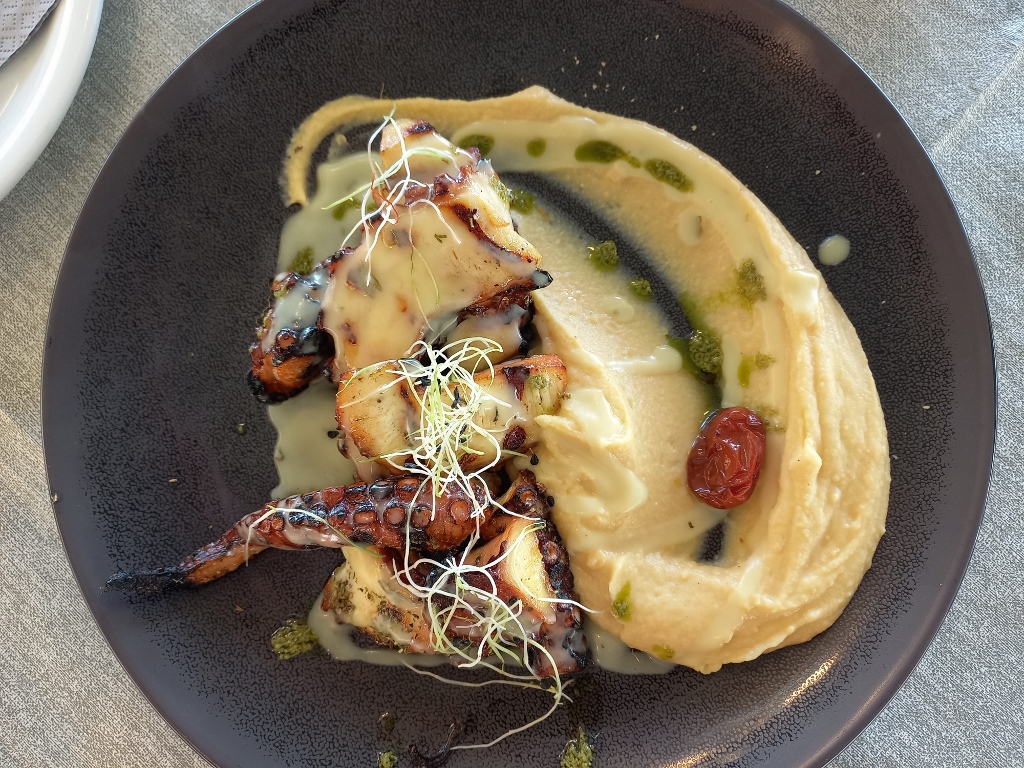 Lunch in Nafplio
Lunch in Nafplio
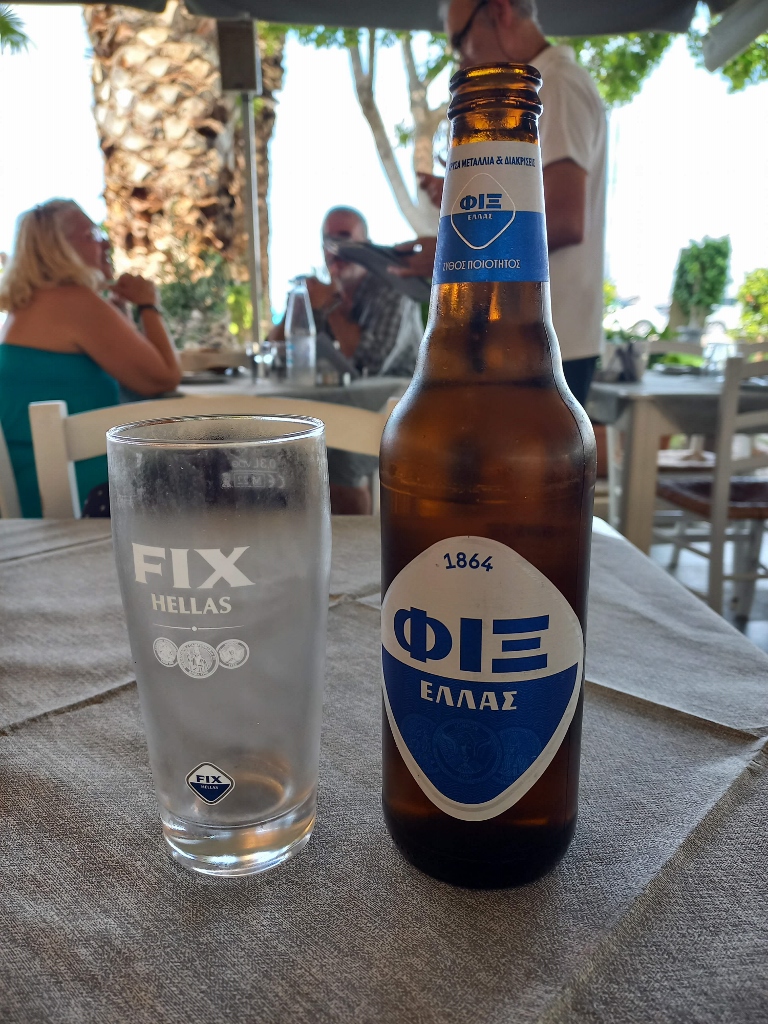 Lunch in Nafplio
Lunch in Nafplio
Having finished with my meal, I returned to the hotel to take a shower and wash off the salt, as well as to take a short nap. After all, this was my vacation.
After that pleasant afternoon rest, I got ready and set out for a walk around Nafplio. Once again, I passed through Kolokotronis Park, simply because it was located between my hotel and the old part of the town. This time, I noticed an outdoor exhibition showcasing sculptures made of marble.
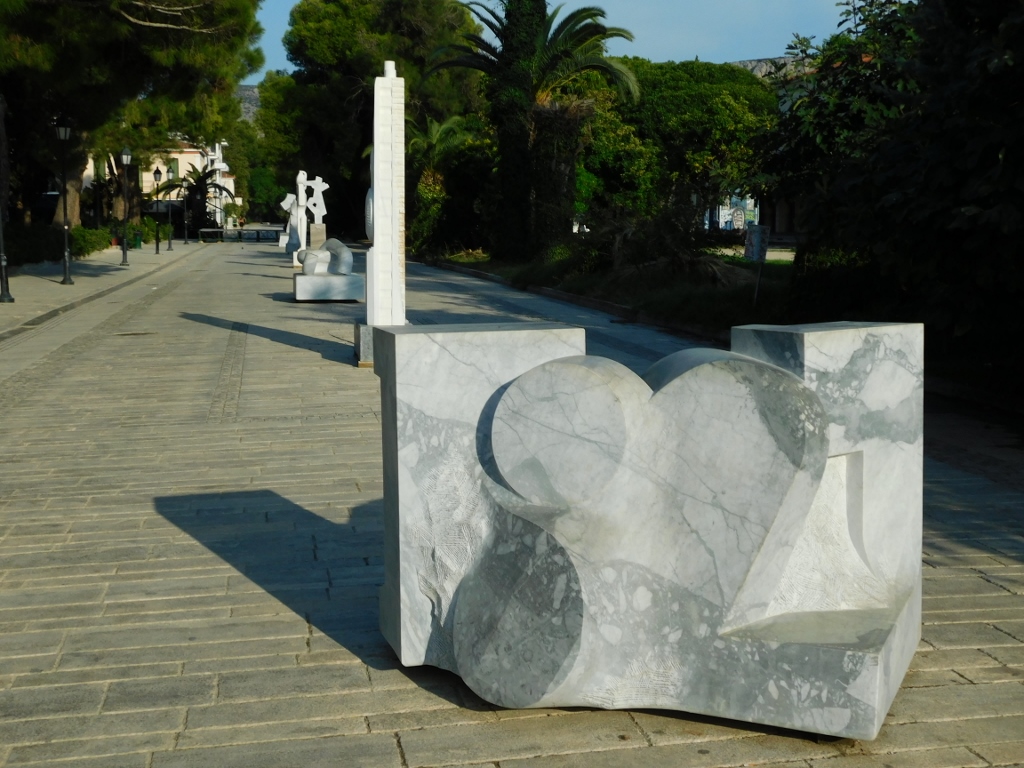 Kolokotronis Park
Kolokotronis Park
I first strolled over to St. George’s Cathedral from the 16th century, but it was closed. I decided to come back a little later, so for now, I continued my walk through the old part of the town, enjoying the picturesque sights.
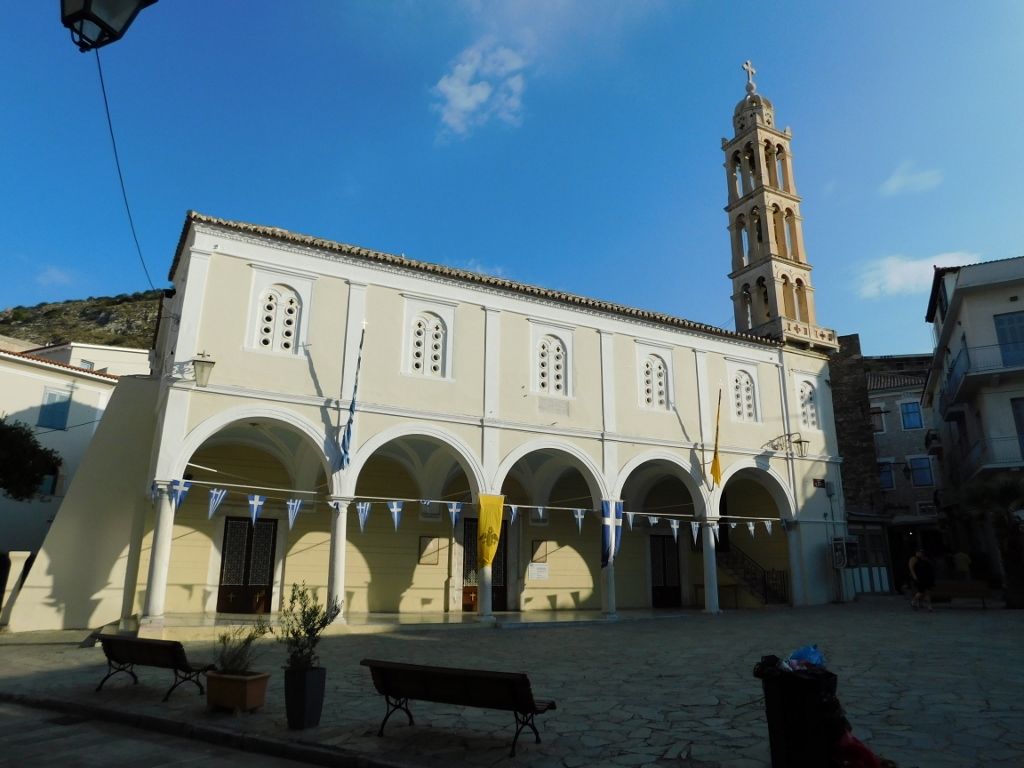 St. George’s Cathedral
St. George’s Cathedral
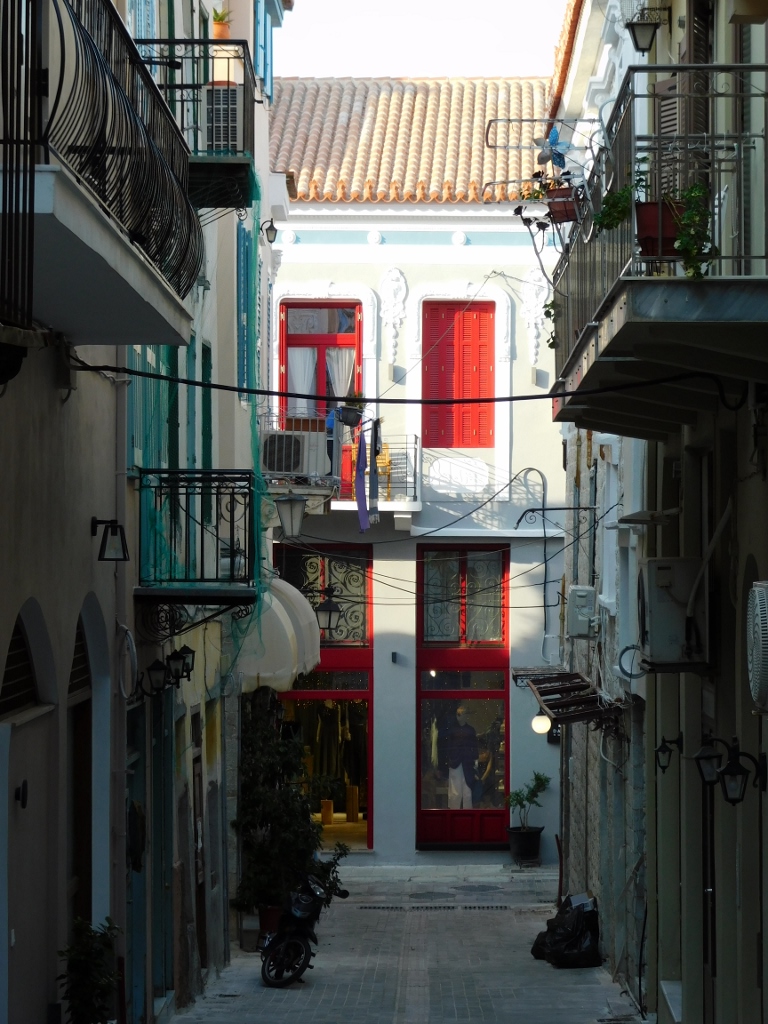 Nafplio, a detail
Nafplio, a detail
Thus, I soon arrived at the small Orthodox Church of St. Spyridon, built in 1702, but it was closed as well. I realised that I would need to plan my visits better, if I wanted to see these churches from the inside, not just the outside.
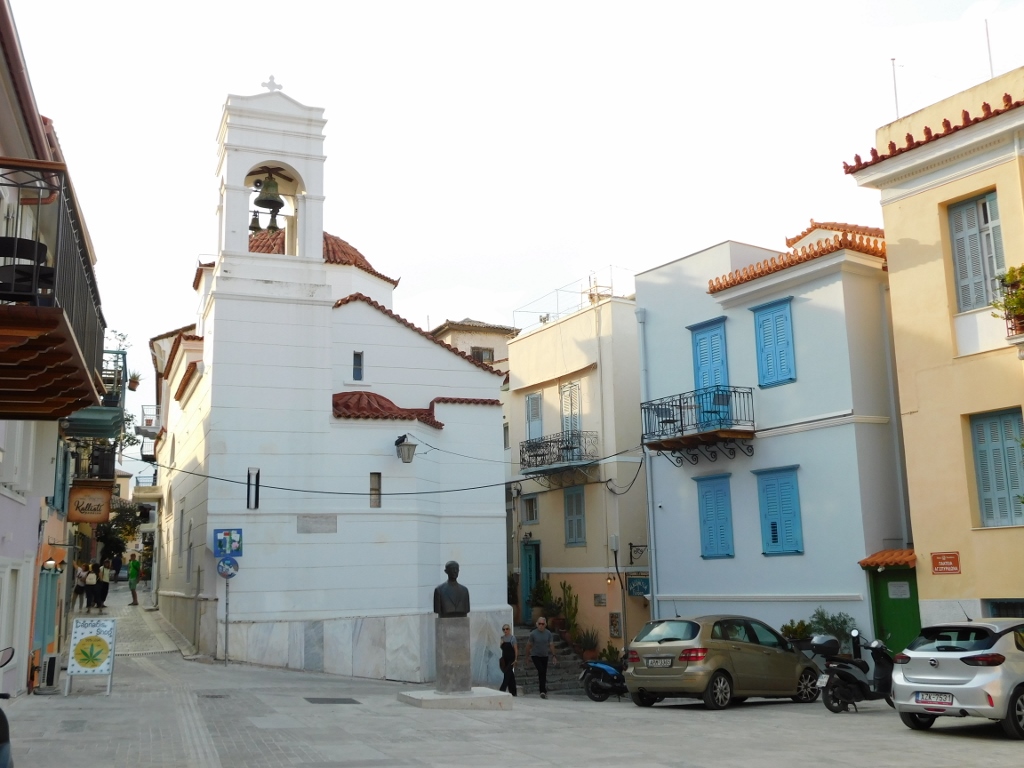 St. Spyridon’s Church
St. Spyridon’s Church
However, I didn’t give up and it was also on my way, so I headed to the Frankish Church. The church got its name because it was built during the late 13th and early 14th centuries, during the rule of the Franks (who were here from 1212 to 1388), as part of a nunnery. Later, during the Ottoman rule in the 18th century, the church was converted into a mosque, but it was returned to the Catholic Church in 1840 after the liberation. In order to reach the church, one must climb stairs and pass through a 13th-century porch.
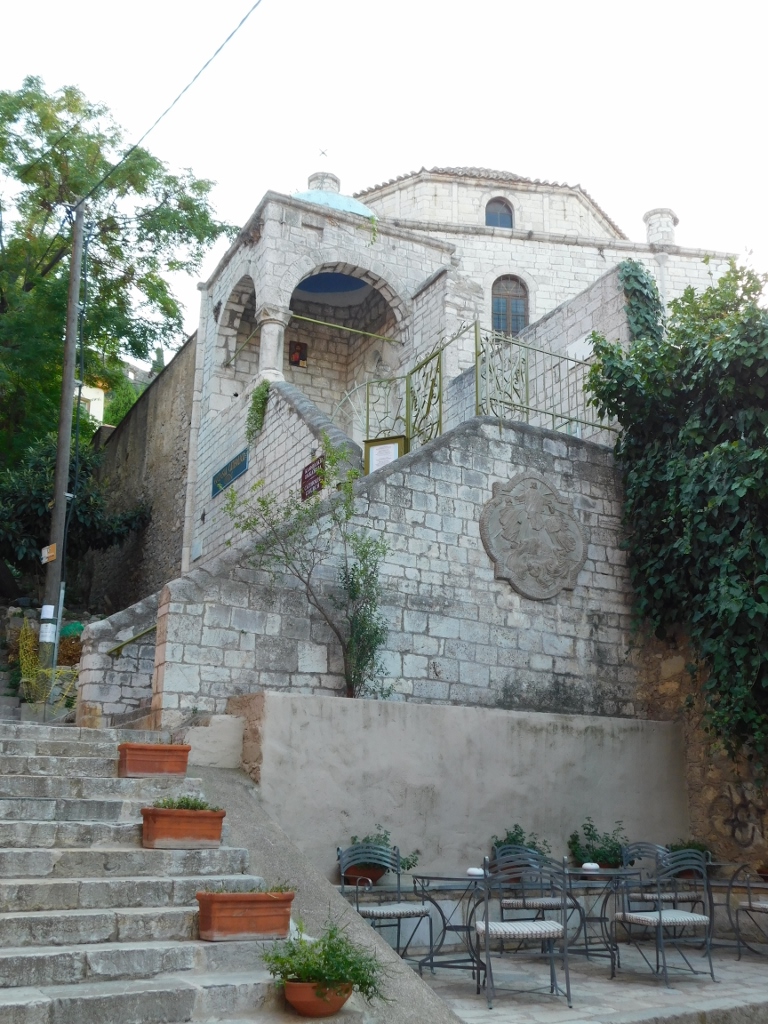 Frankish Church
Frankish Church
This church was open, so I was able to take some photos of its interior and I also captured the entrance porch from the courtyard.
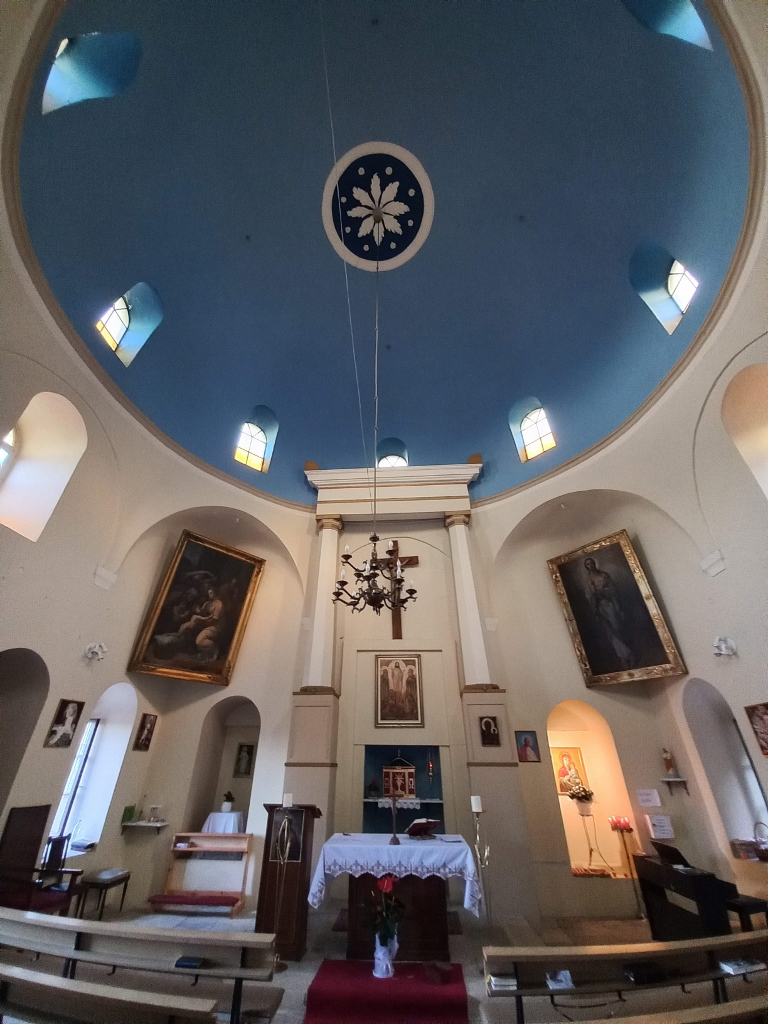 Frankish Church, a detail
Frankish Church, a detail
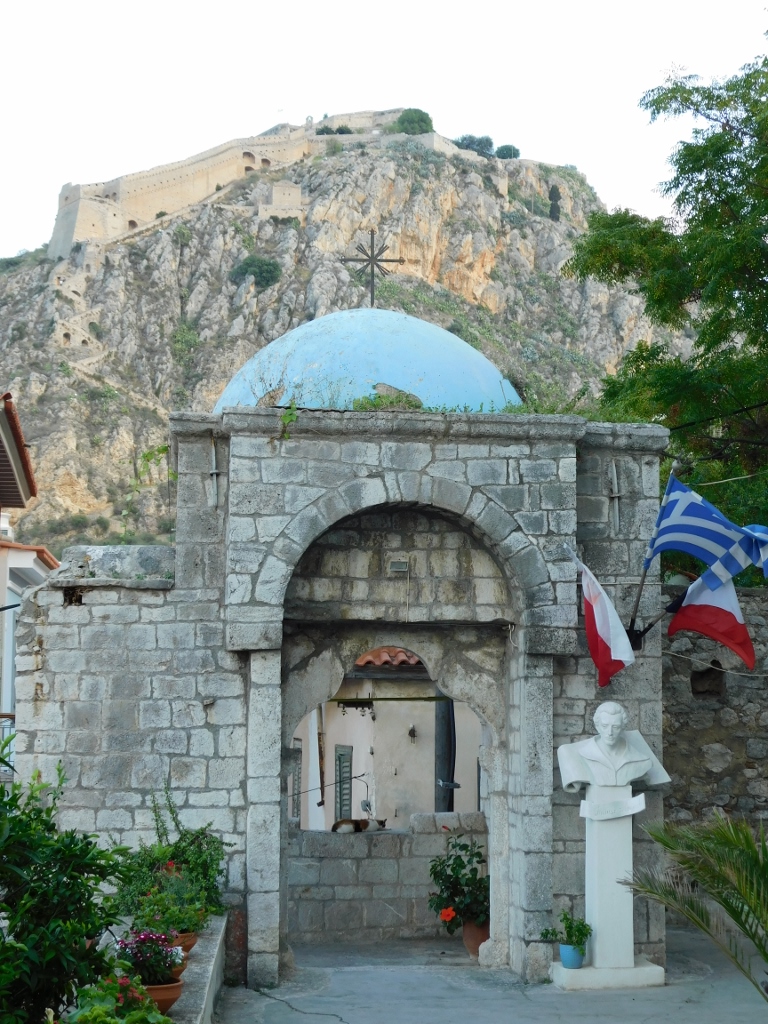 Frankish Church, a detail
Frankish Church, a detail
Next to the entrance is the Memorial to the Philhellenes who died in 1821 fighting for Greece’s liberation from the Ottomans.
I also spotted a beautiful cat and took a picture of it. While I’m not particularly “crazy” about cats, this one was truly lovely. Later during my walk, I encountered another cat sleeping in the space between a car hood and the windshield. Perhaps cats are especially popular in Nafplio?
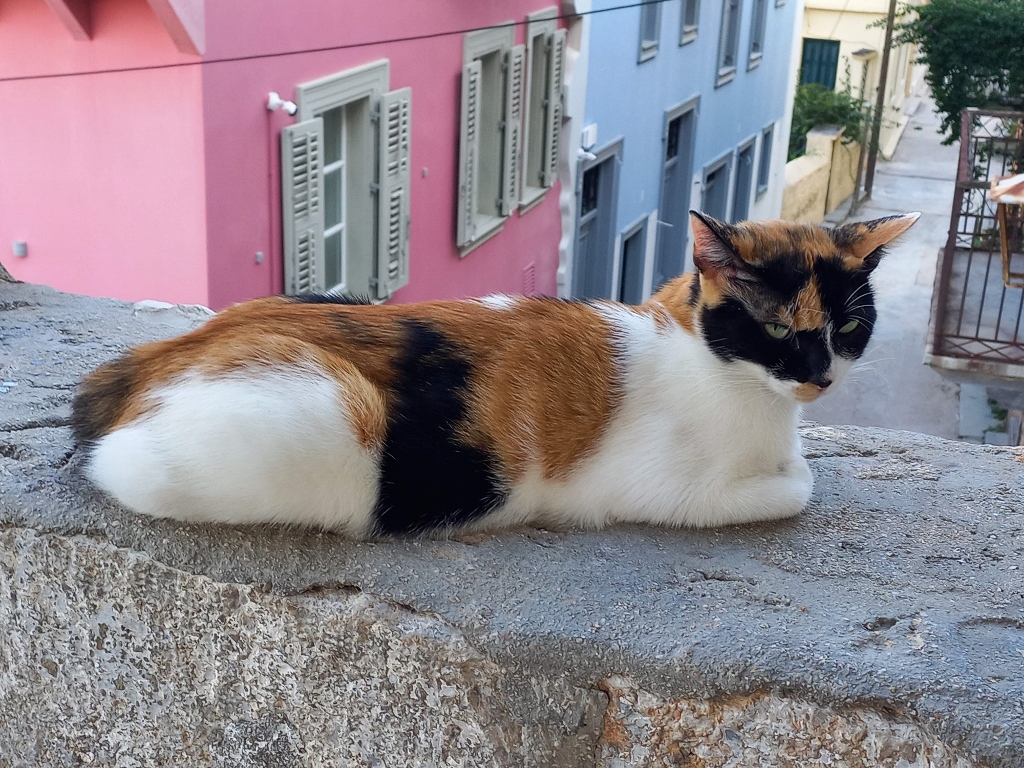 Nafplio, a detail
Nafplio, a detail
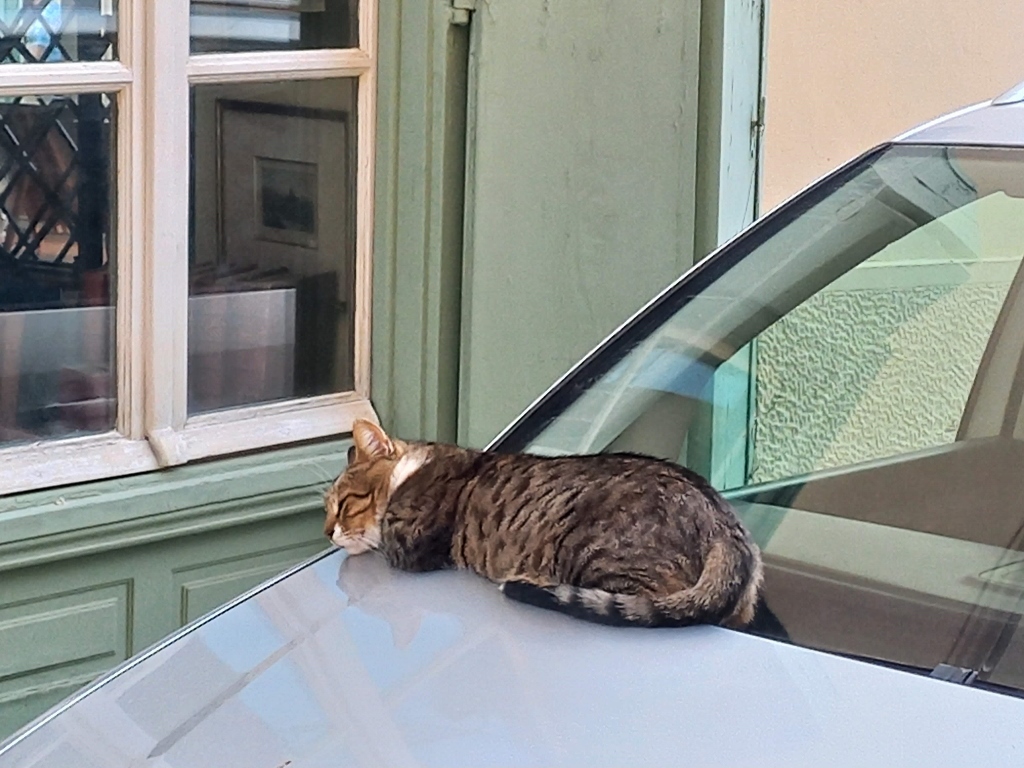 Nafplio, a detail
Nafplio, a detail
I continued to climb uphill through the streets of Nafplio and eventually arrived at one of the possible entrances to another fortress in the city, known as Akronafplia, which means “inner castle.” This is the oldest part of the town.
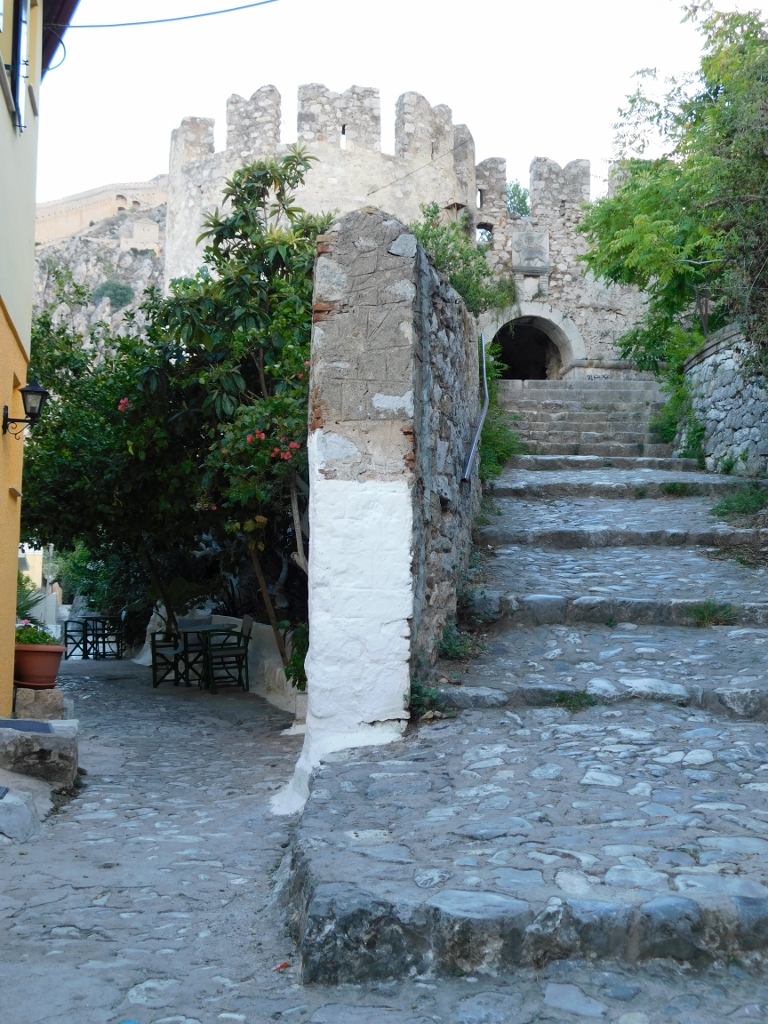 Nafplio, a detail
Nafplio, a detail
Until the 13th century, there was a proper human settlement here, on a small elevation (86 m above sea level). However, with the arrival of the Venetians and Franks, this area was transformed into a fortress. This is clearly visible by the relief depicting the lion of St. Mark, the symbol of Venice.
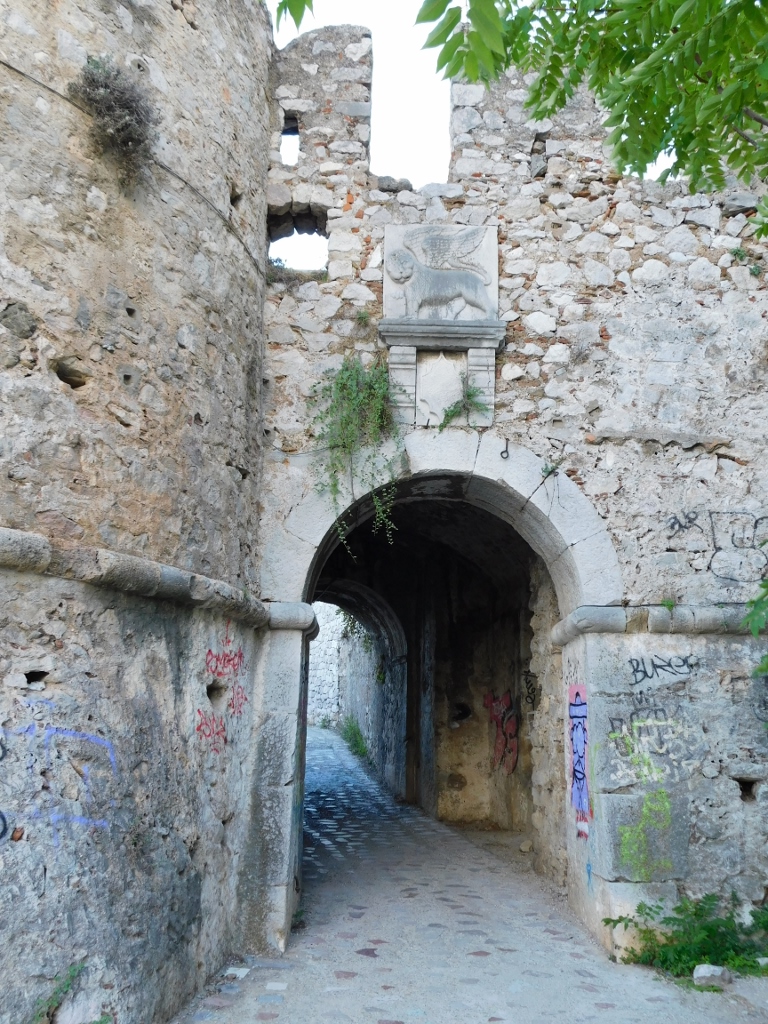 Nafplio, a detail
Nafplio, a detail
After the liberation and until relatively recently, there was a hospital, military barracks and a prison here, but all of that has been relocated and today this historic site is primarily dedicated to tourists.
It is definitely worth a visit, as it offers a wonderful view of Nafplio and many of its notable sites, such as St. George’s Cathedral.
 Nafplio
Nafplio
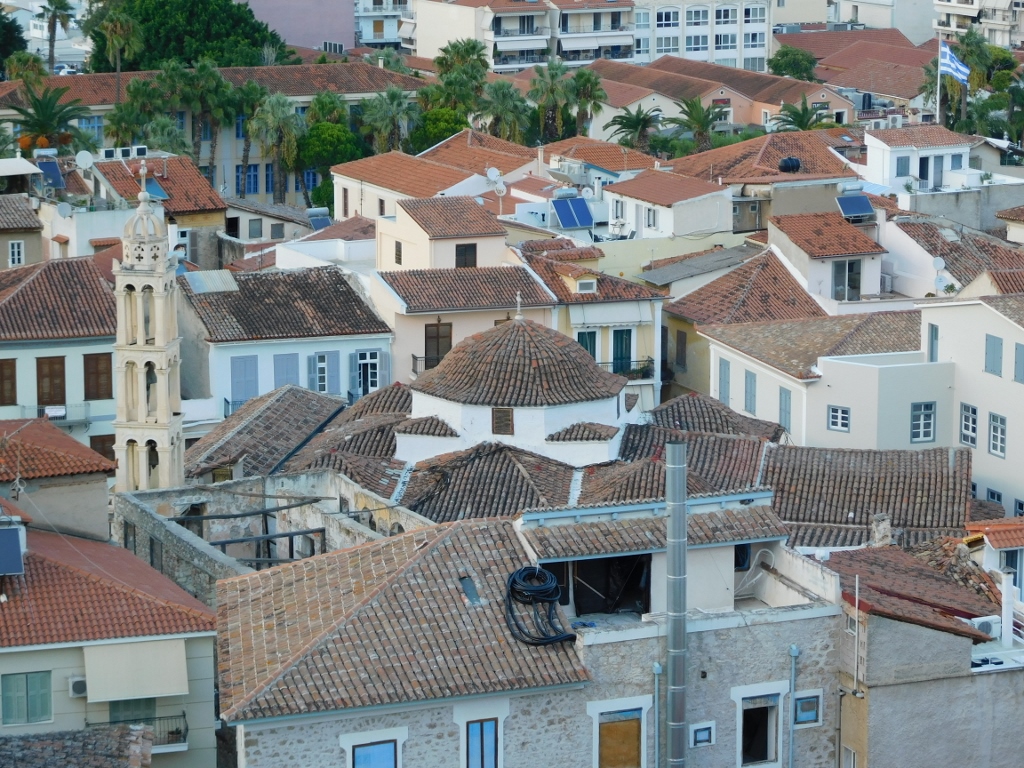 St. George’s Cathedral
St. George’s Cathedral
To start with, I headed to the other side of the fortress, where I could enjoy the view of the Argolic Gulf and the nearby Arvanitias Beach.
 Argolic Gulf
Argolic Gulf
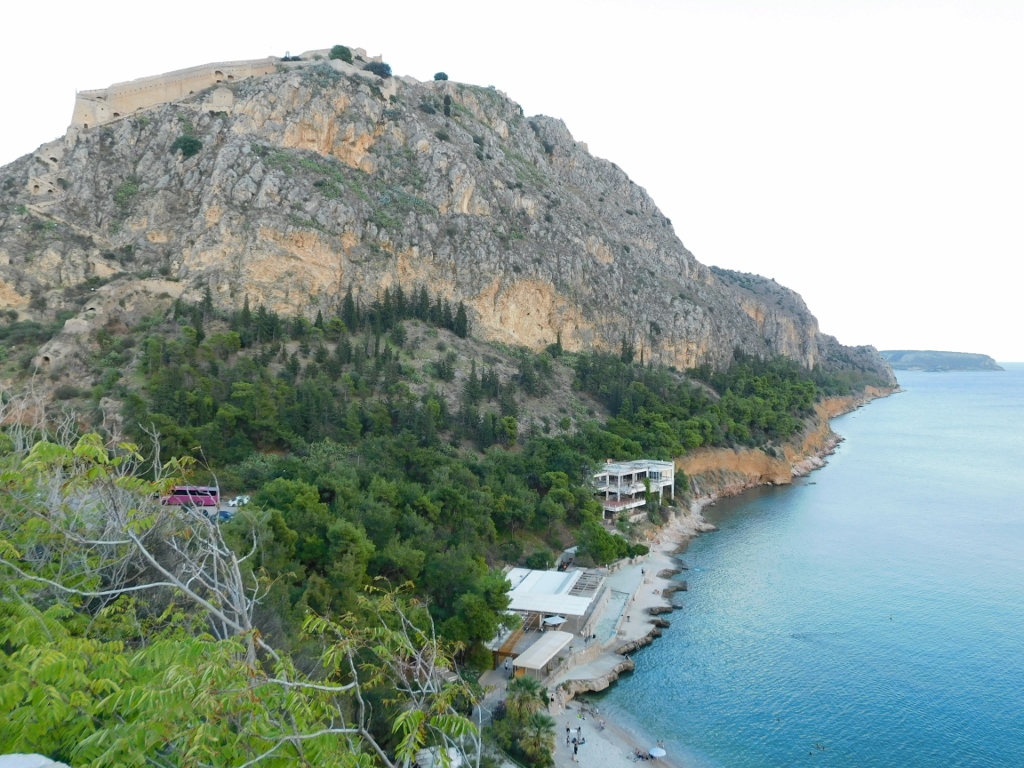 Arvanitias Beach
Arvanitias Beach
But, there are also remnants of the fortress, so I explored those a bit and took a walk around the top of the hill, as it is quite a pleasant spot.
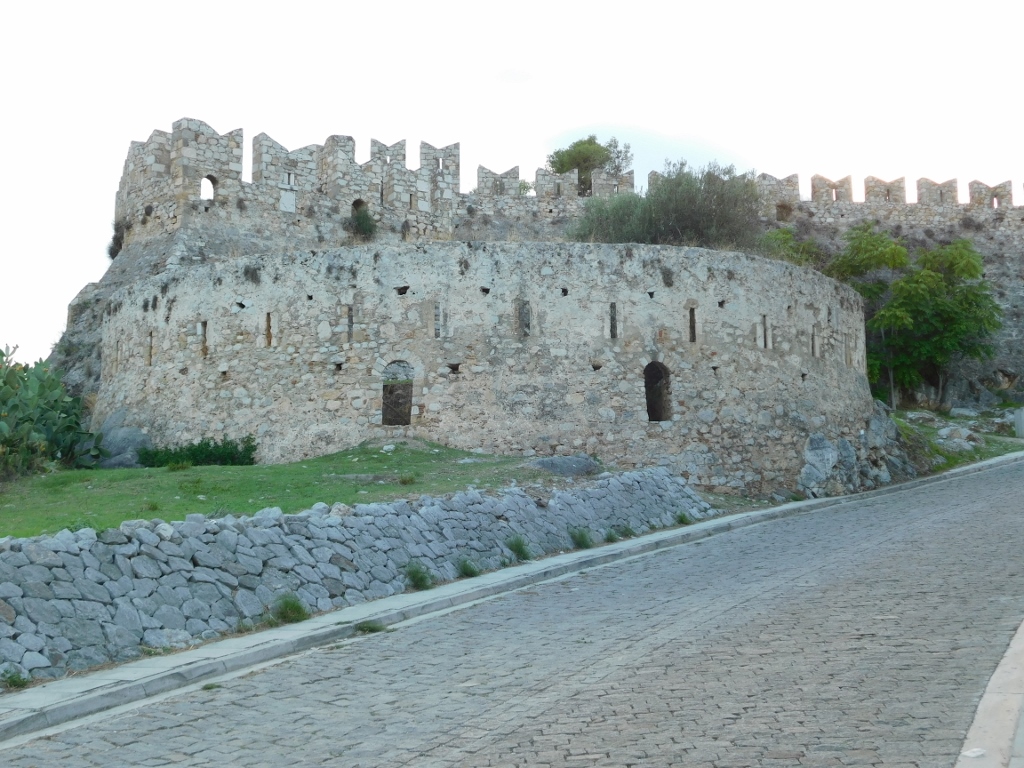 Acronafplia fortress, a detail
Acronafplia fortress, a detail
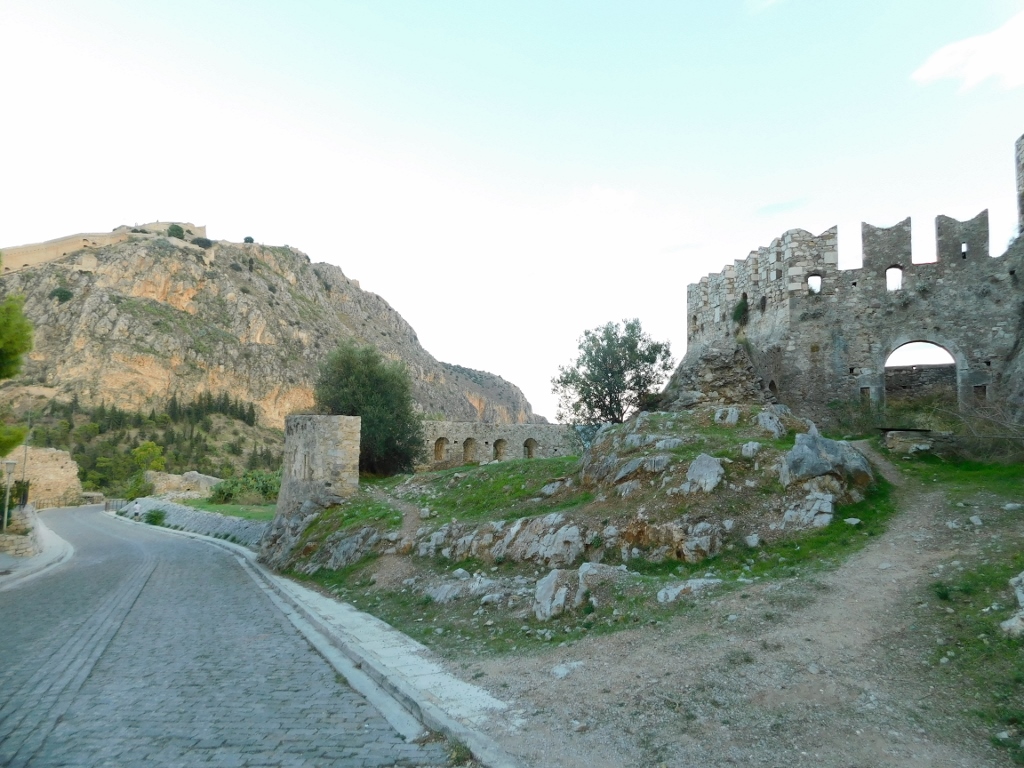 Acronafplia fortress, a detail
Acronafplia fortress, a detail
And so I arrived at the clock tower, which was built here in the 19th century (now facing the town). During World War II, it was destroyed by the Germans, but it was restored soon after the war ended.
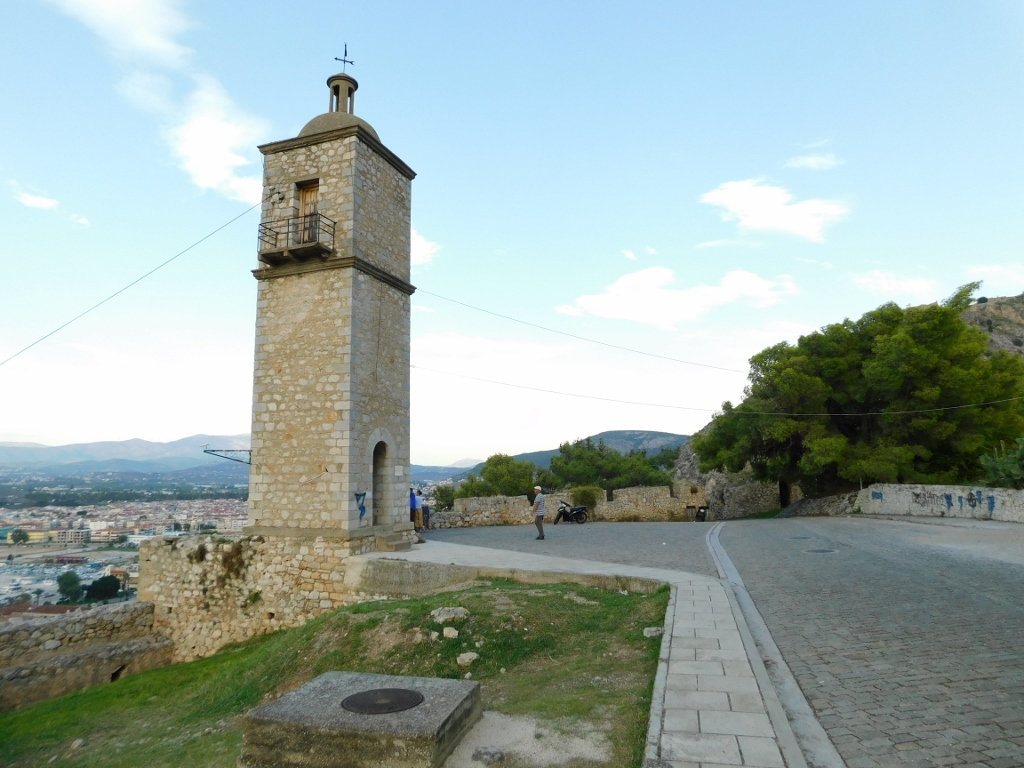 Acronafplia fortress, a detail
Acronafplia fortress, a detail
When I reached the end of the street that runs along the top of the hill, I couldn’t find any passage or path to descend to the town. At the end of that street, there was a fancy hotel, but I also noticed there was a lift, so I took it in order to go down. I was a bit surprised by the appearance of the space – it felt like I was in a large spaceship, where in fact it was all just unexpected.
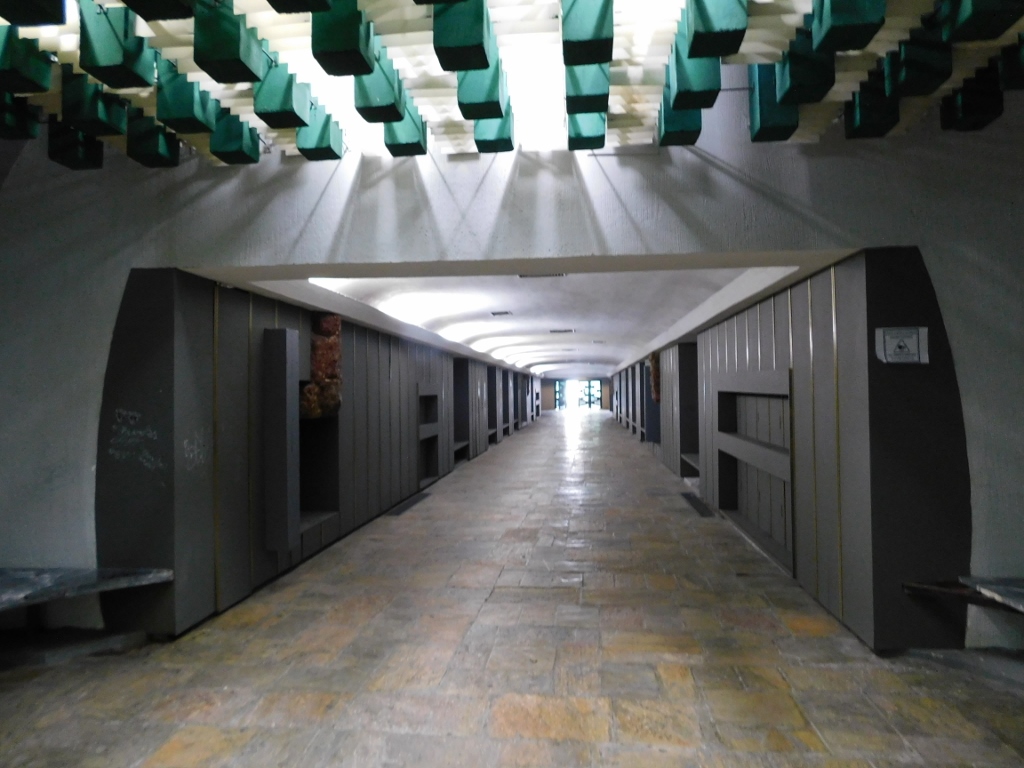 Hallway leading to the exit from the lifts
Hallway leading to the exit from the lifts
And then I started simply to stroll through the streets of Nafplio, without any specific plan, but with the intention of heading back towards the hotel. Along the way, I took pictures of interesting details around the town.
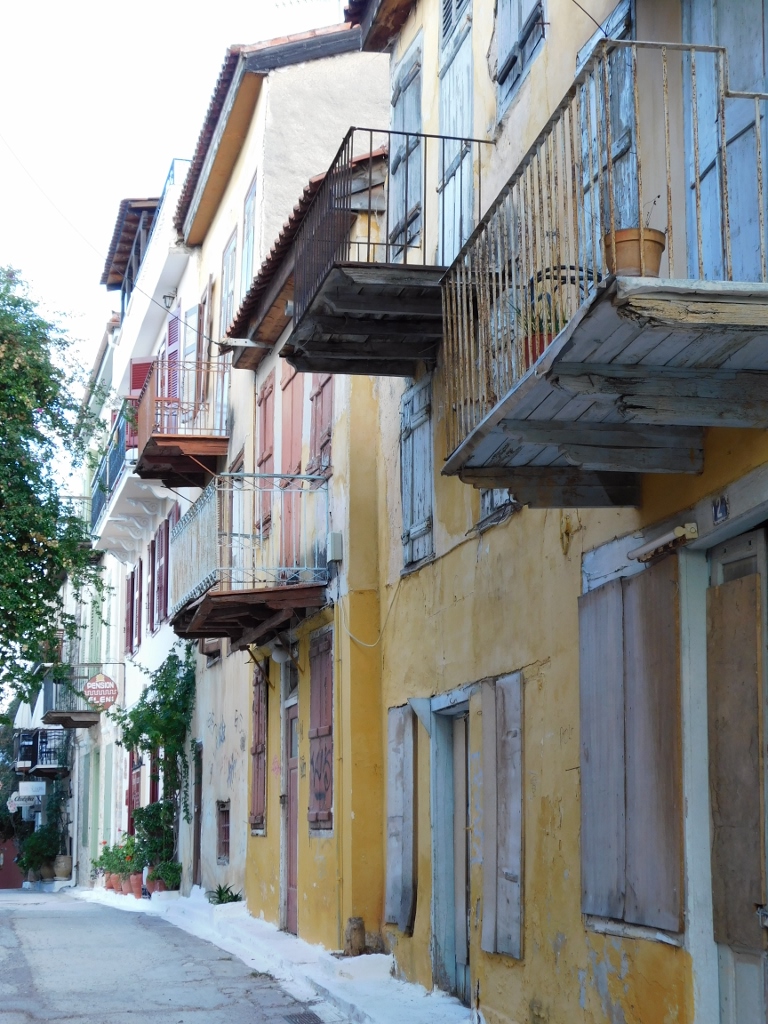 Nafplio, a detail
Nafplio, a detail
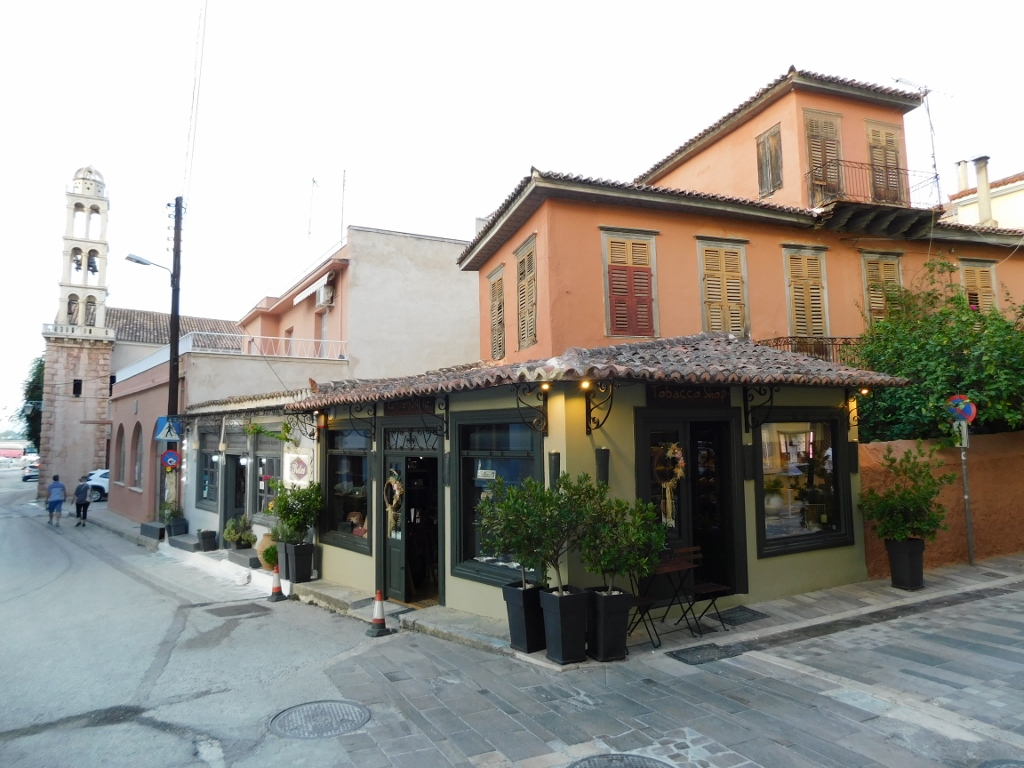 Nafplio, a detail
Nafplio, a detail
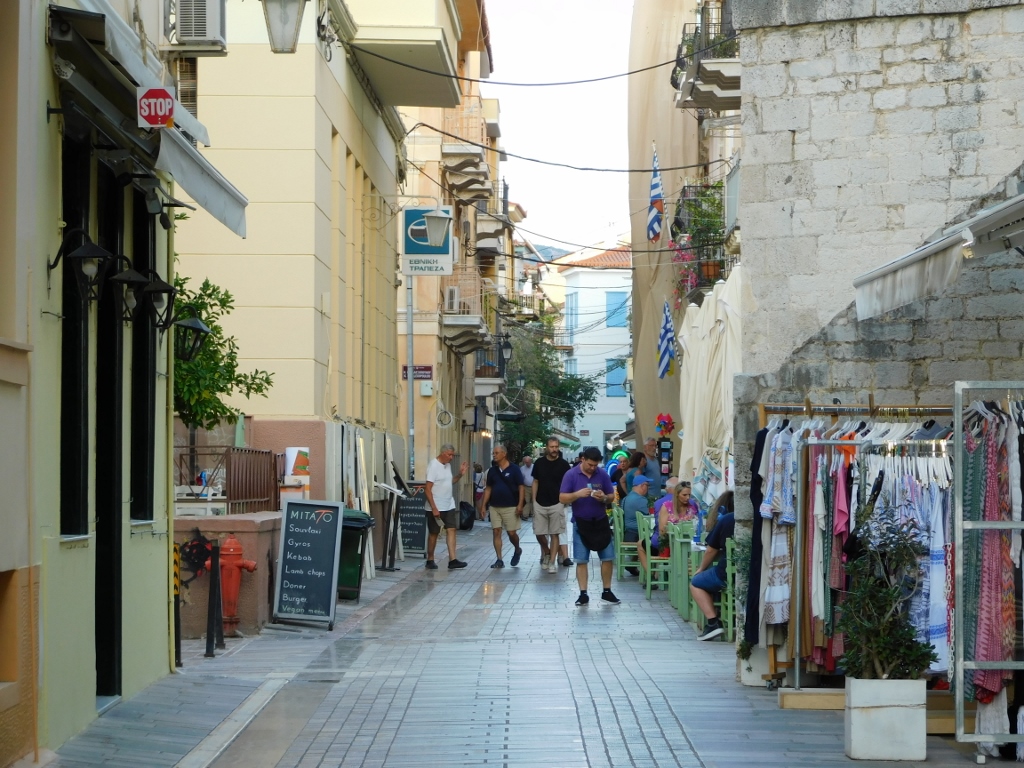 Nafplio, a detail
Nafplio, a detail
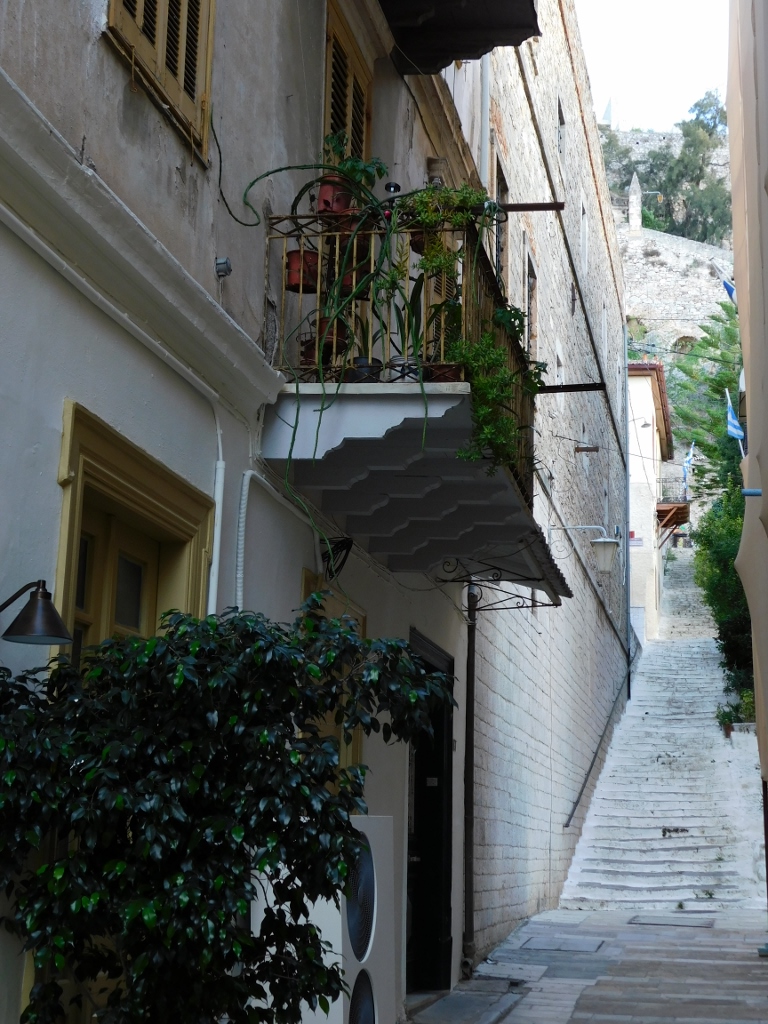 Nafplio, a detail
Nafplio, a detail
I soon arrived at the spacious square in front of the Archaeological Museum of Nafplio, known as Syntagma Square.
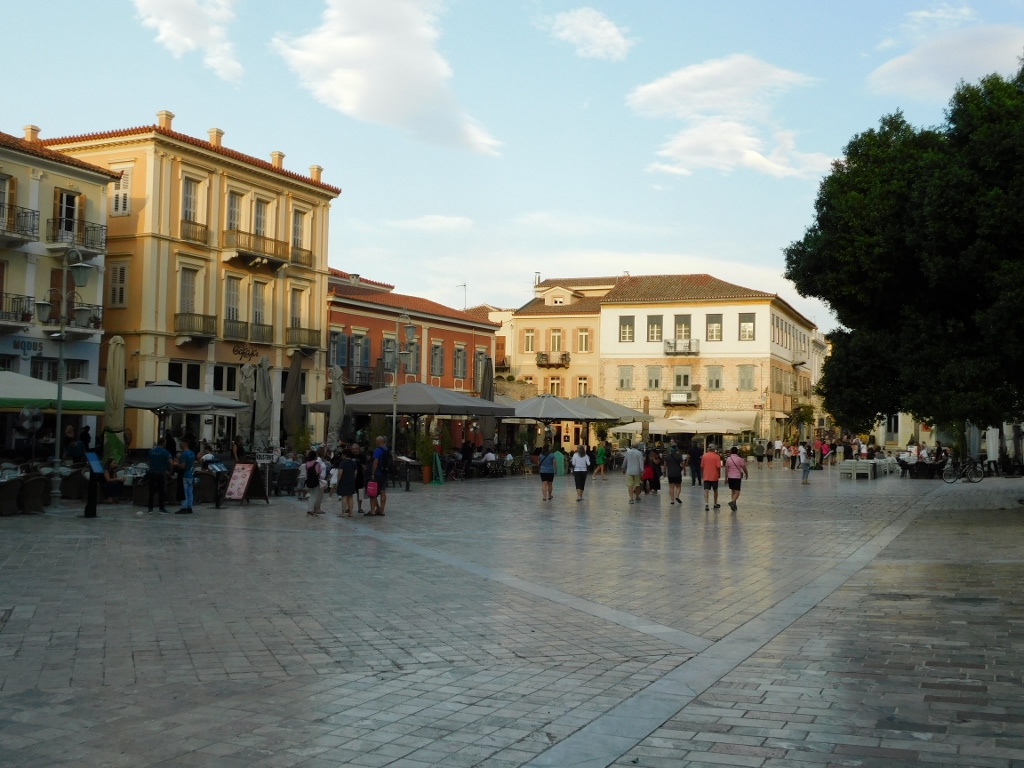 Nafplio, a detail
Nafplio, a detail
A little set back from Syntagma Square is another former mosque, which is now known as the First Parliament of Greece.
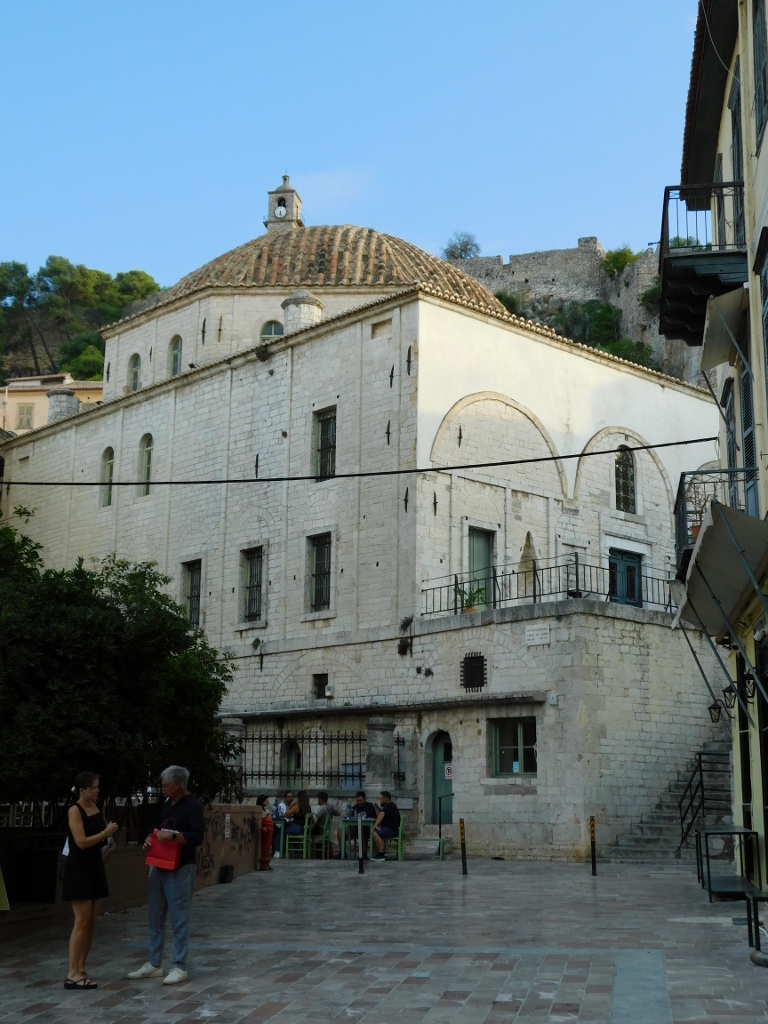 Nafplio, a detail
Nafplio, a detail
Namely, Nafplio was liberated in 1822, a year after the outbreak of the Greek War of Independence, and that year, the first session of the Greek National Assembly was held in this building. Still, even today, many elements of Islamic architecture can still be seen, such as the niches on the facade.
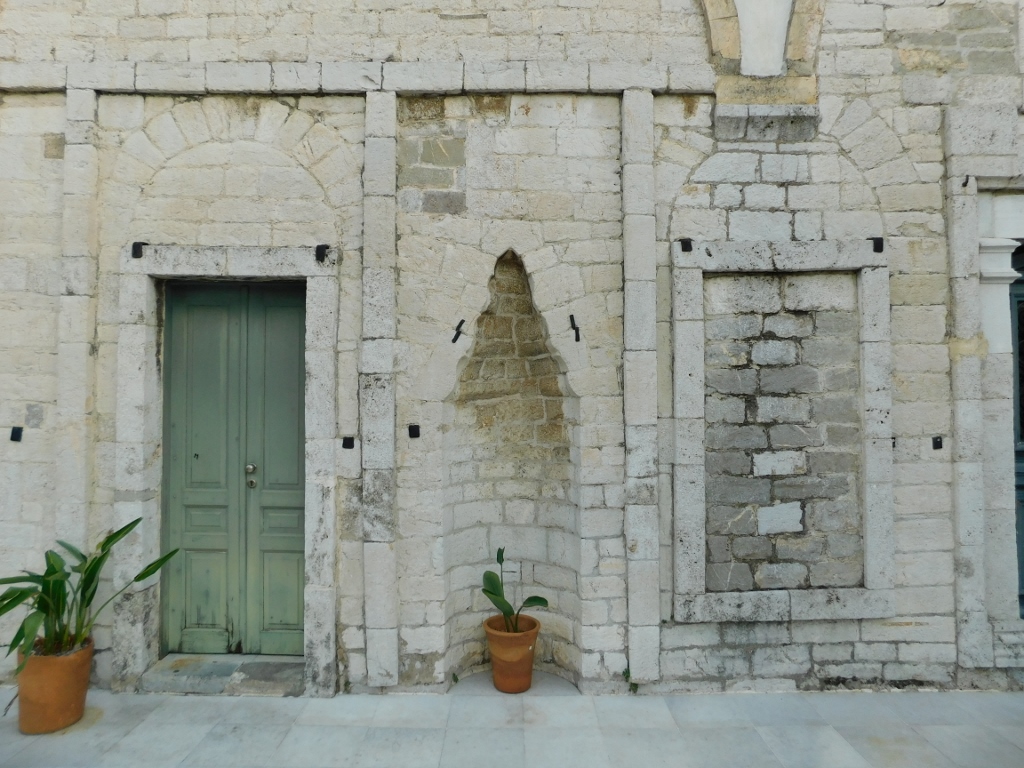 Nafplio, a detail
Nafplio, a detail
I continued my walk as the sun slowly descended toward the horizon, illuminating the rooftops with its distinctive glow.
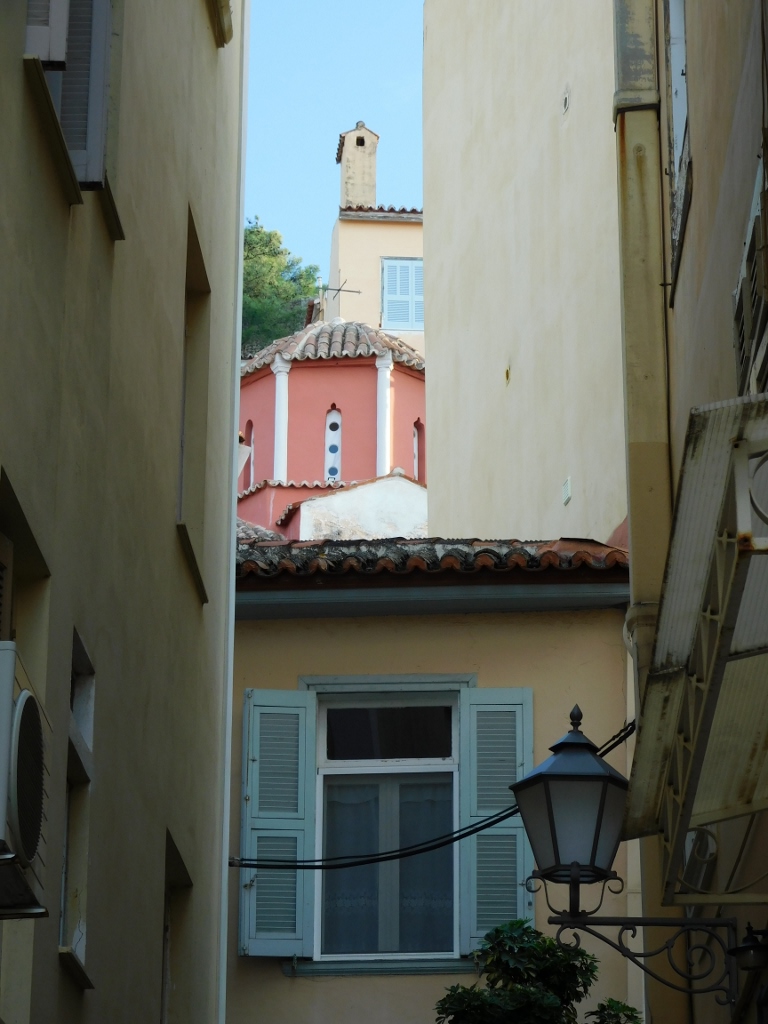 Nafplio, a detail
Nafplio, a detail
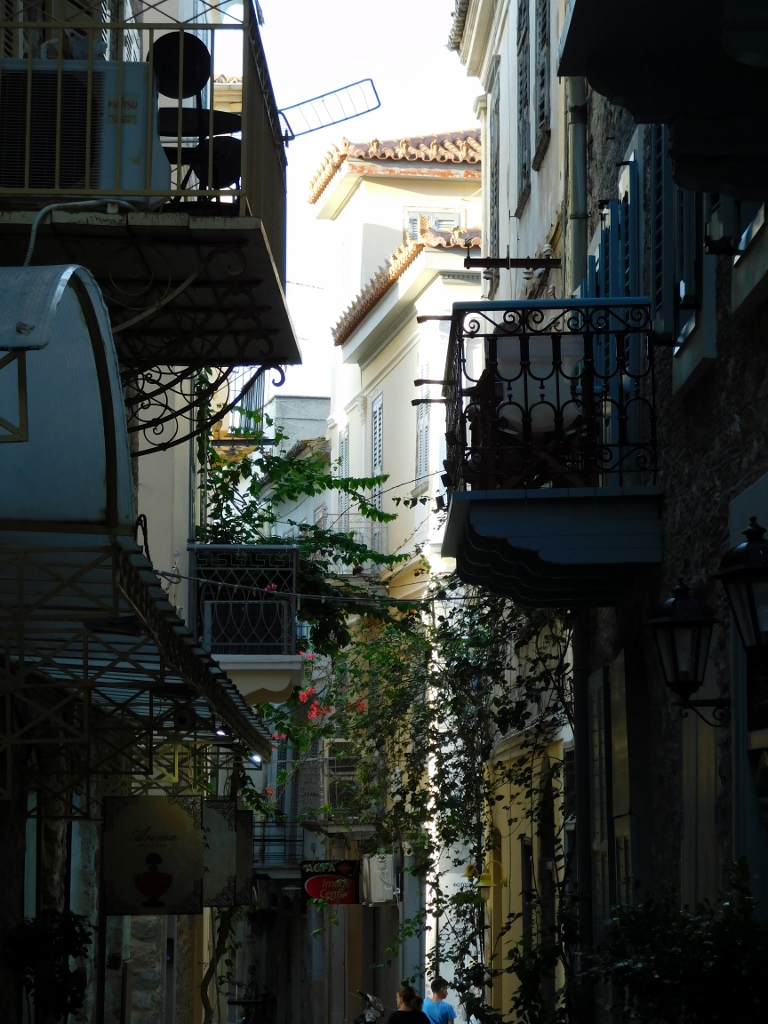 Nafplio, a detail
Nafplio, a detail
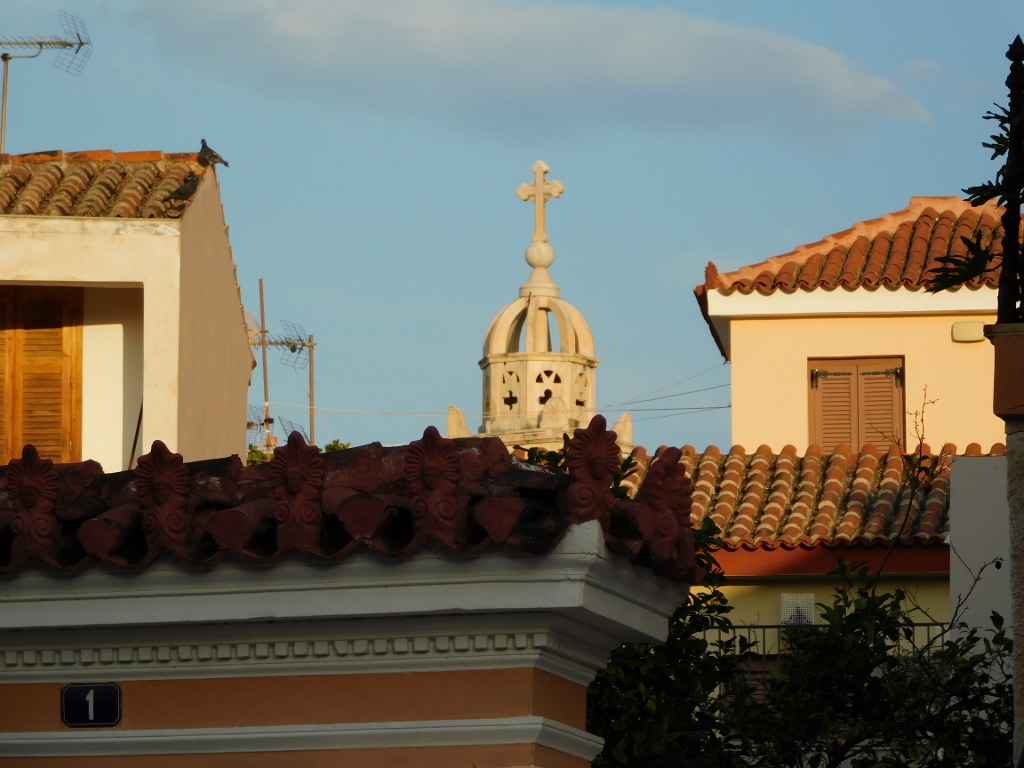 Nafplio, a detail
Nafplio, a detail
Along the way, I decided to try visiting a couple of the churches that had been closed at the beginning of my walk. The first on my route was St. Spyridon’s Church from 1702. Since I’ve already shared a picture of it at the start of the text, here is a photo showing a charming part of the square where the church is located.
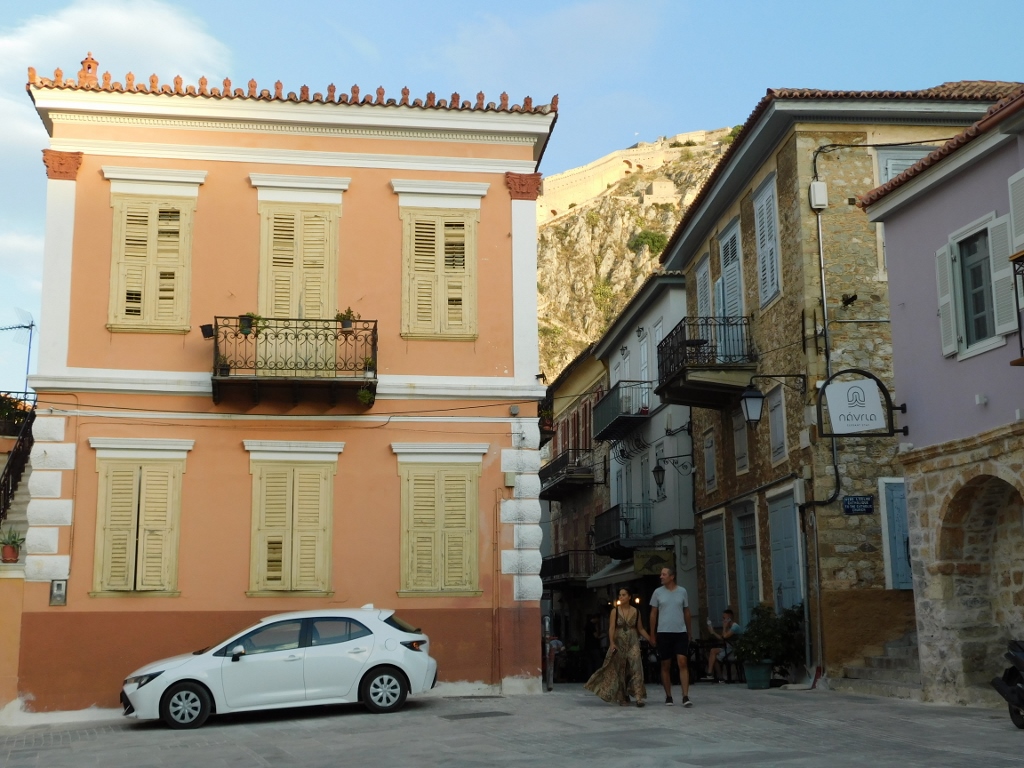 Nafplio, a detail
Nafplio, a detail
This is a small Orthodox church built by the Venetians, but it holds great historical significance in Greece. At the entrance to the church, Ioannis Kapodistrias, a Greek statesman who was elected as the first head of state of independent Greece in 1827 and is considered the founder of the modern Greek state, was assassinated in September 1831.
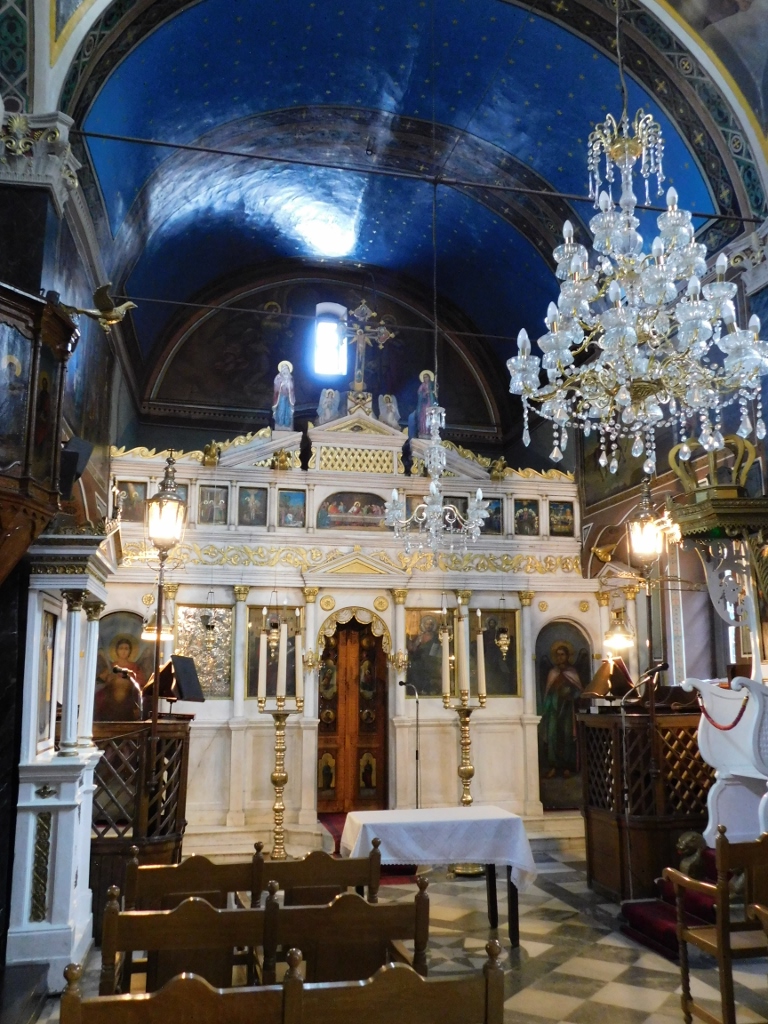 St. Spyridon’s Church, the interior
St. Spyridon’s Church, the interior
I continued with my walk and found myself taking another picture of a house I had seen (and photographed) earlier because it has a beautiful facade, with striking red shutters that looked even more stunning in the light of the setting sun than when I first saw them.
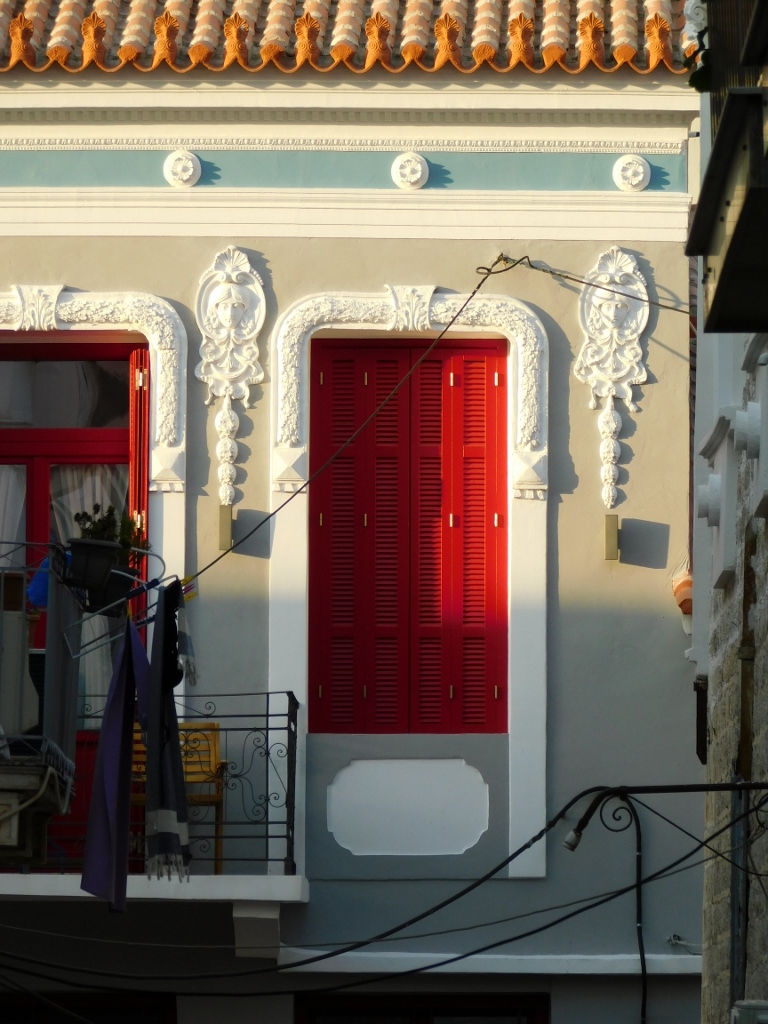 Nafplio, a detail
Nafplio, a detail
And so, I soon reached St. George’s Cathedral from the 16th century again. I had photographed it before, but here is another picture because you can also see well the Fortress of Palamidi in the background.
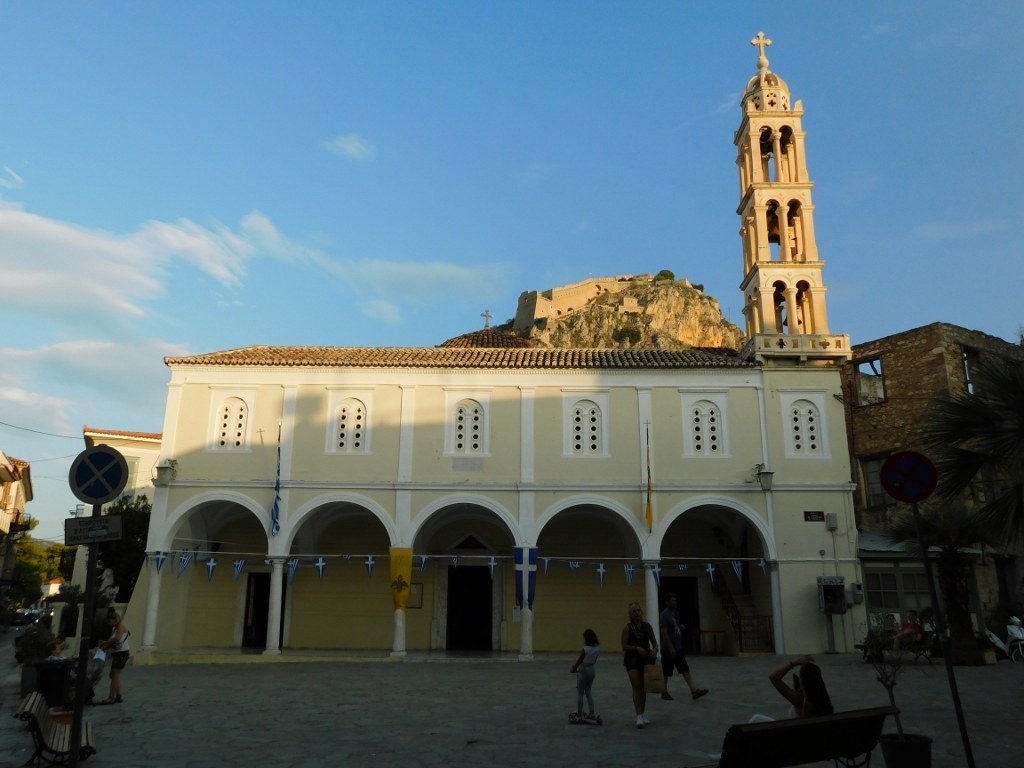 St. George’s Cathedral
St. George’s Cathedral
From this angle, I could also see the blend of architectural styles used in its construction – a Byzantine dome (though only its top is visible) alongside the Venetian bell tower and arcades.
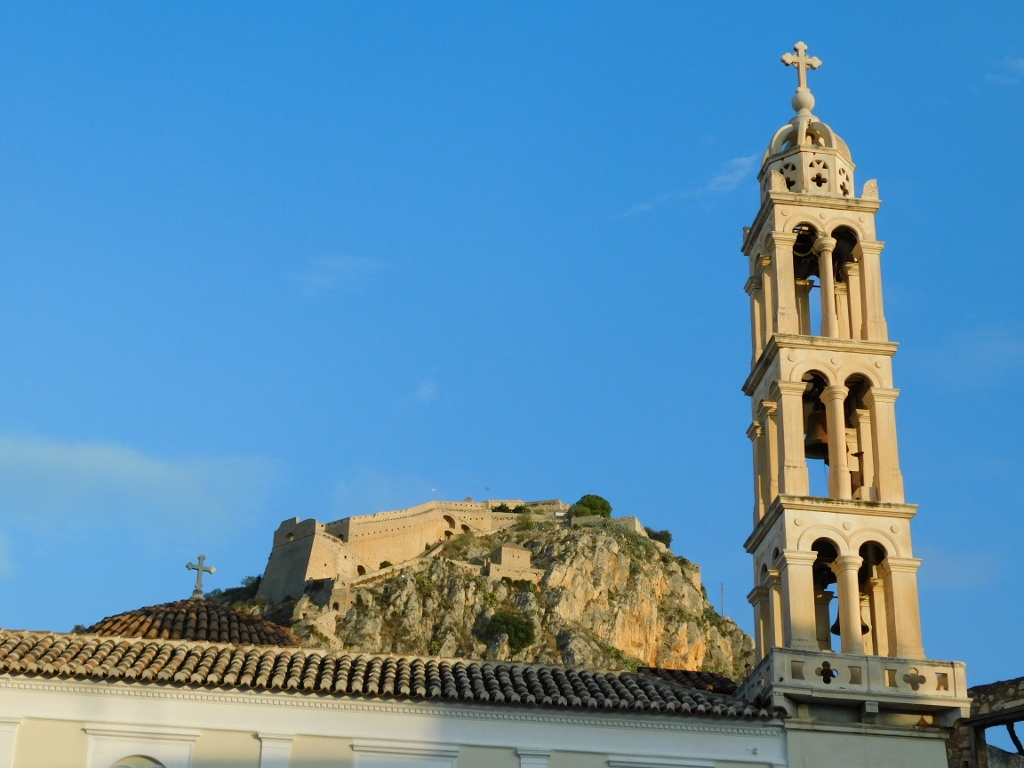 St. George’s Cathedral, a detail
St. George’s Cathedral, a detail
The church was now open and I could go inside, but there were numerous scaffolds set up, as it was clear that renovations were underway inside.
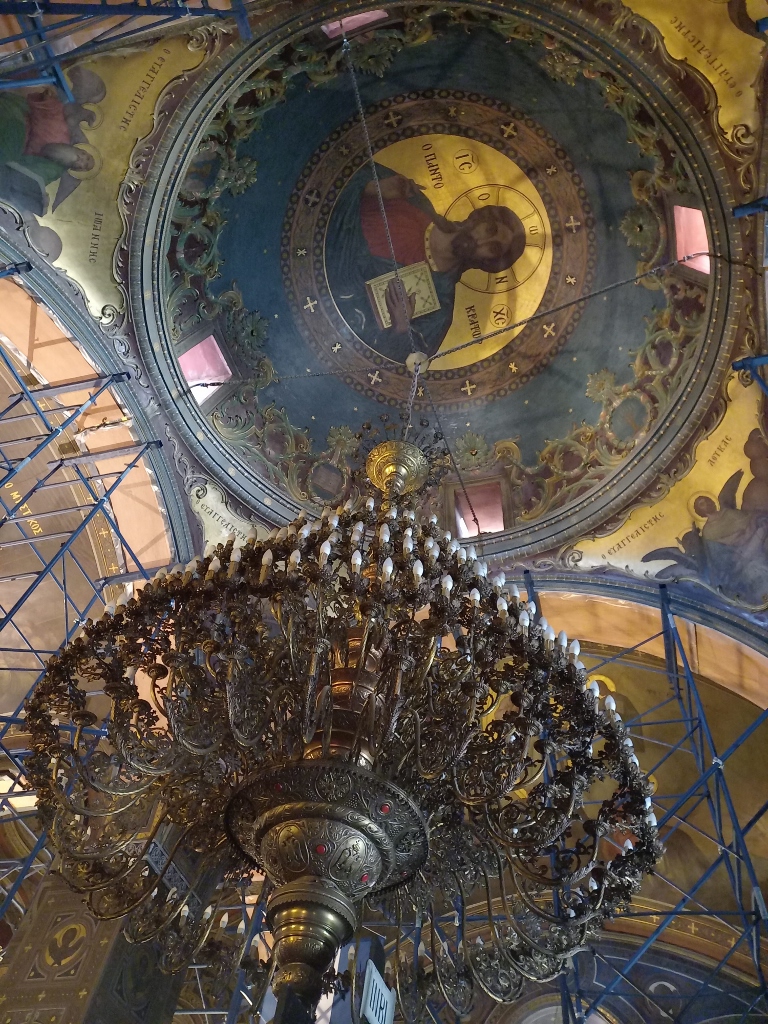 St. George’s Cathedral, a detail
St. George’s Cathedral, a detail
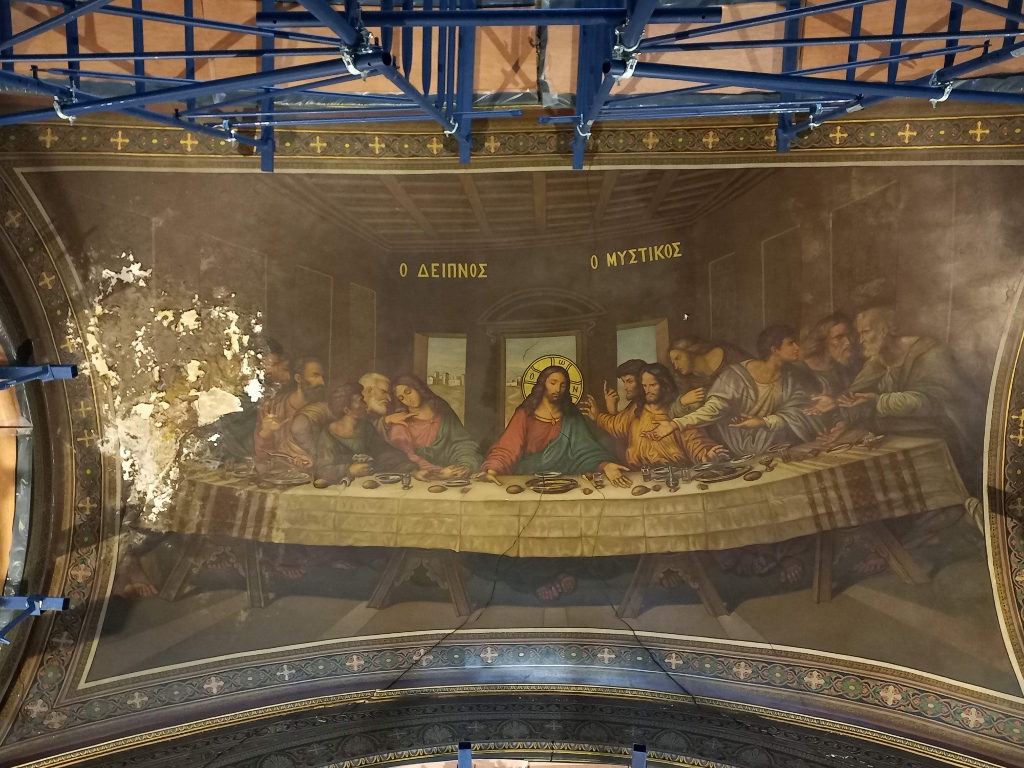 St. George’s Cathedral, a detail
St. George’s Cathedral, a detail
After visiting the church, I stepped outside and continued my walk through Nafplio, mostly following the pedestrian streets. It’s a lovely coastal town and, as far as I know, it’s quite popular among tourists. However, since I was here in September, there were fewer people around. Of course, that didn’t mean the shops and restaurants were closed, as there were still plenty of interested visitors.
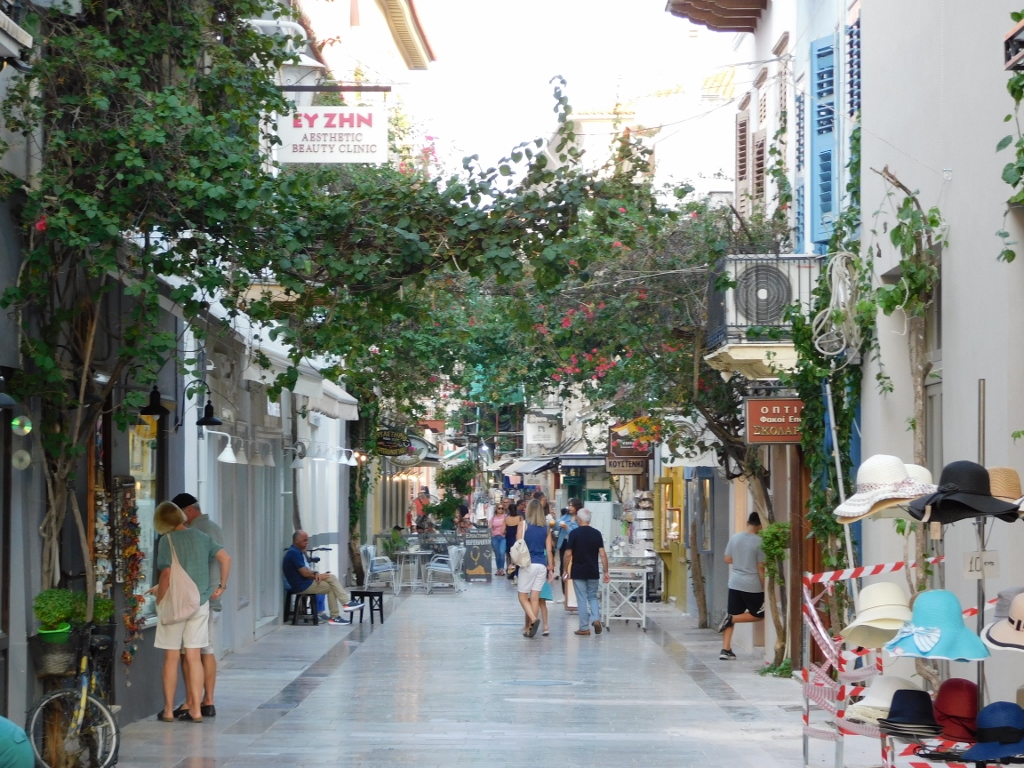 Nafplio, a detail
Nafplio, a detail
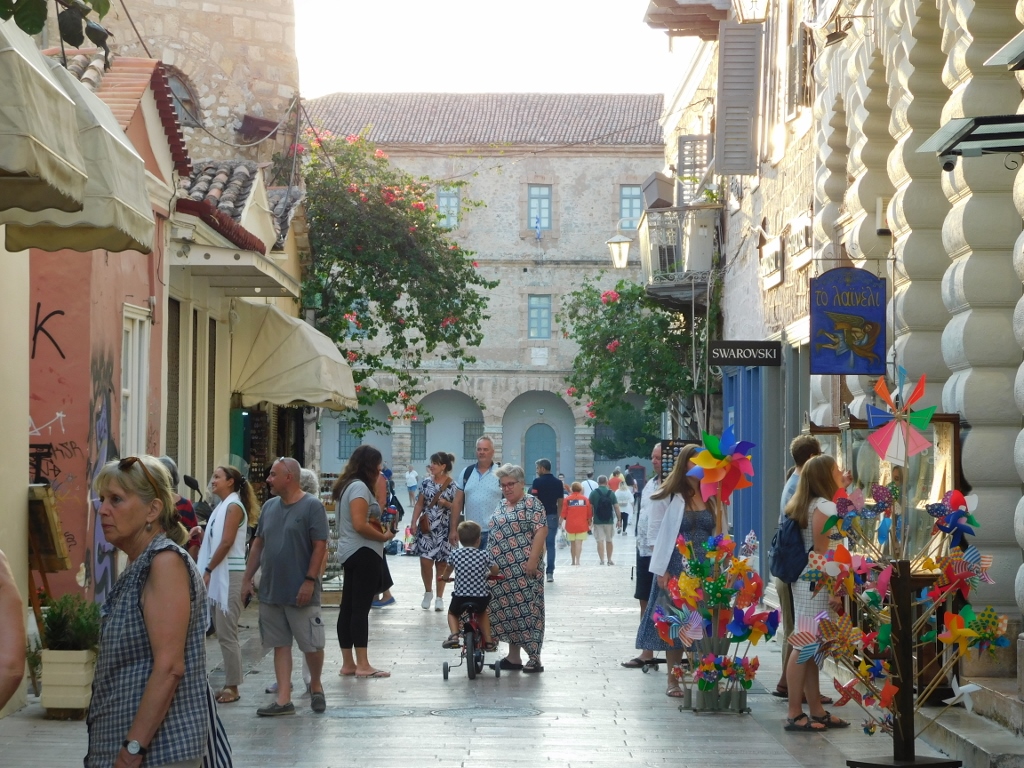 Nafplio, a detail
Nafplio, a detail
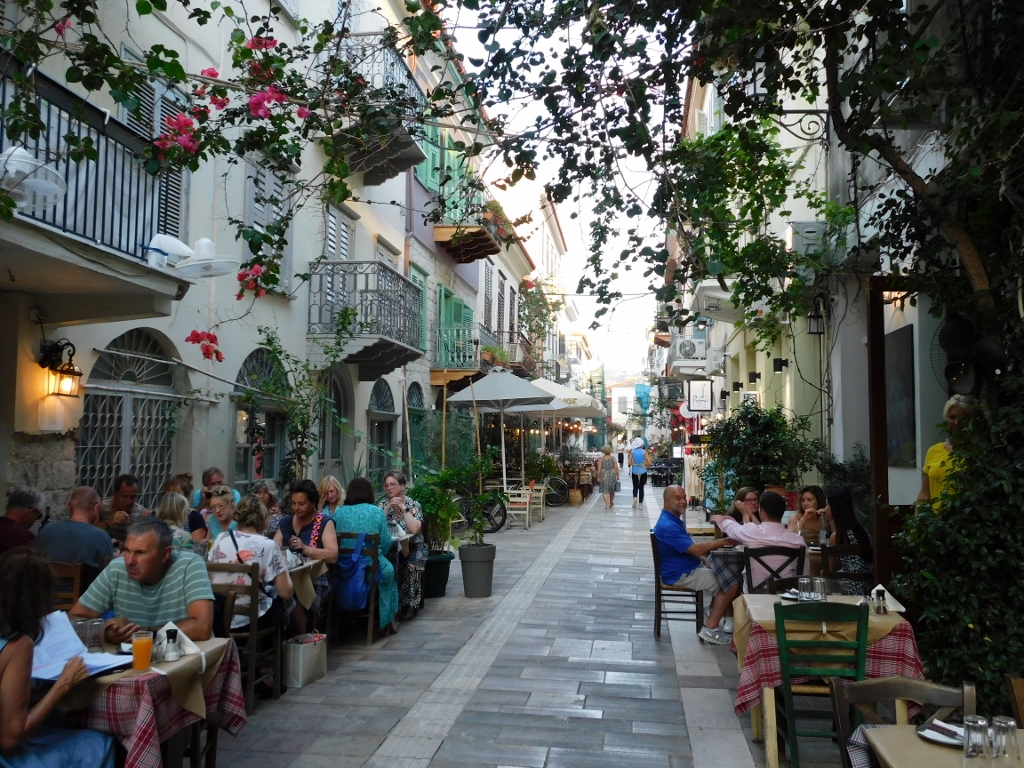 Nafplio, a detail
Nafplio, a detail
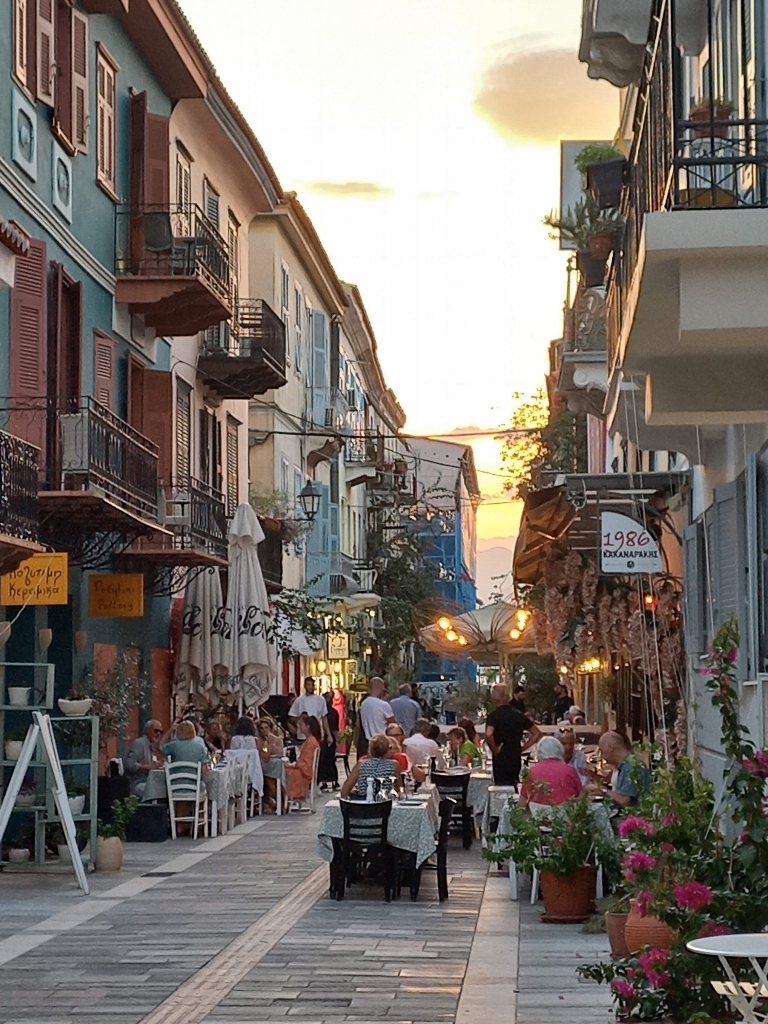 Nafplio, a detail
Nafplio, a detail
I went back to the shore to enjoy the sunset and take in the view of the town on the northeast side of the Argolic Gulf.
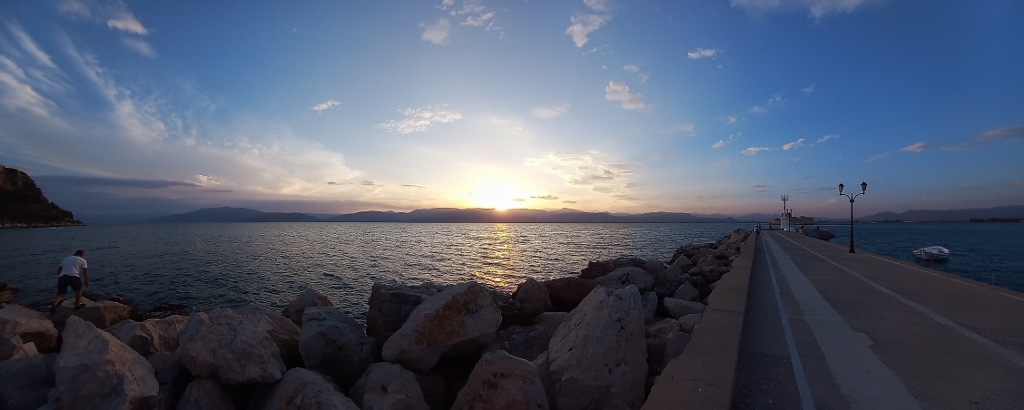 Sunset in Nafplio
Sunset in Nafplio
 Nafplio
Nafplio
As I was finally making my way back to the hotel, I took a photo of the French Philhellene Monument, erected in 1903 in honour of the French officers, soldiers and sailors.
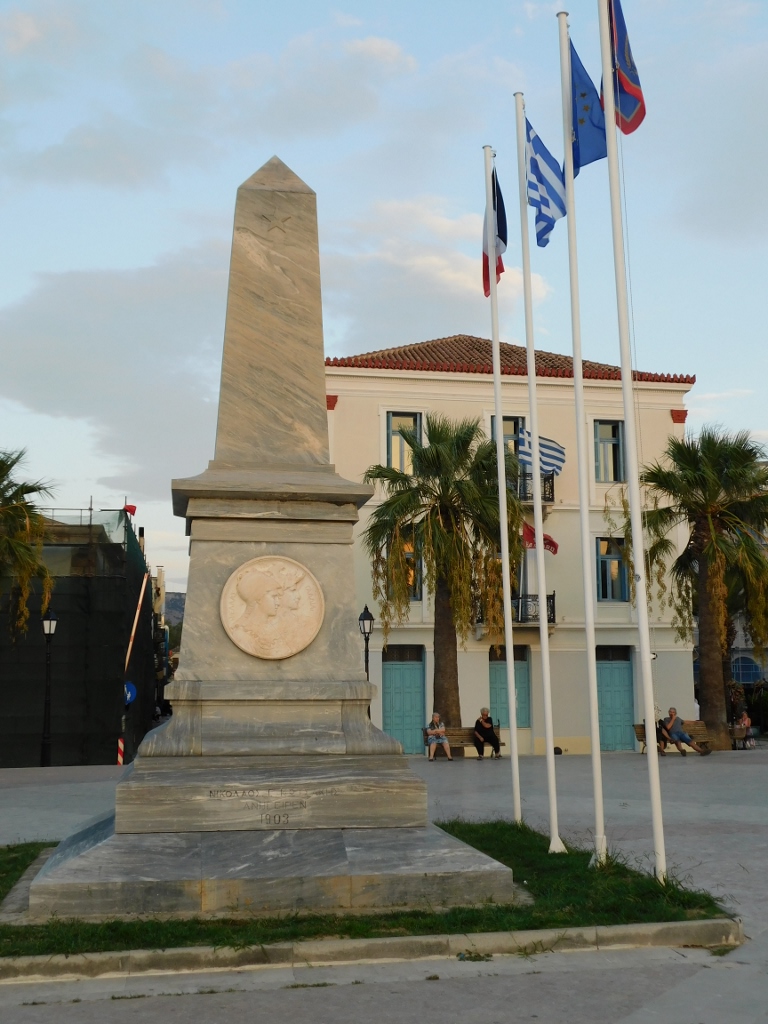 Nafplio, a detail
Nafplio, a detail
Then I returned to the hotel and went to bed early, as I had planned a car trip for the next day.
The following morning, I woke up with an unpleasant surprise, feeling strange – as if I were about to catch a cold. This often happens to me when I’ve been too busy or stressed before a trip. Maybe it’s also because I’m not as young as I used to be, so my body reacts differently to changes.
In any case, my internal thermostat tends to get completely disrupted in these situations. I feel cold for a moment, then suddenly hot, and I start to sweat. This isn’t too bad when I’m at home or resting, but it becomes problematic when I’m travelling. That day, the situation was made worse by the relatively high outside temperature and humidity, which made my body heat up, combined with a strong wind that suddenly cooled me down. It was not a good combination for me.
Fortunately, I had everything I needed at that moment – two t-shirts and a beach pareo (I had thought I might go for a swim that day), which I wrapped around myself. As it turned out, all the other visitors to Epidaurus were wearing just one shirt and didn’t have wide shawls, but that didn’t affect me at all.
So, in that state, I set out to explore Epidaurus, where everyone comes primarily for the famous theatre.